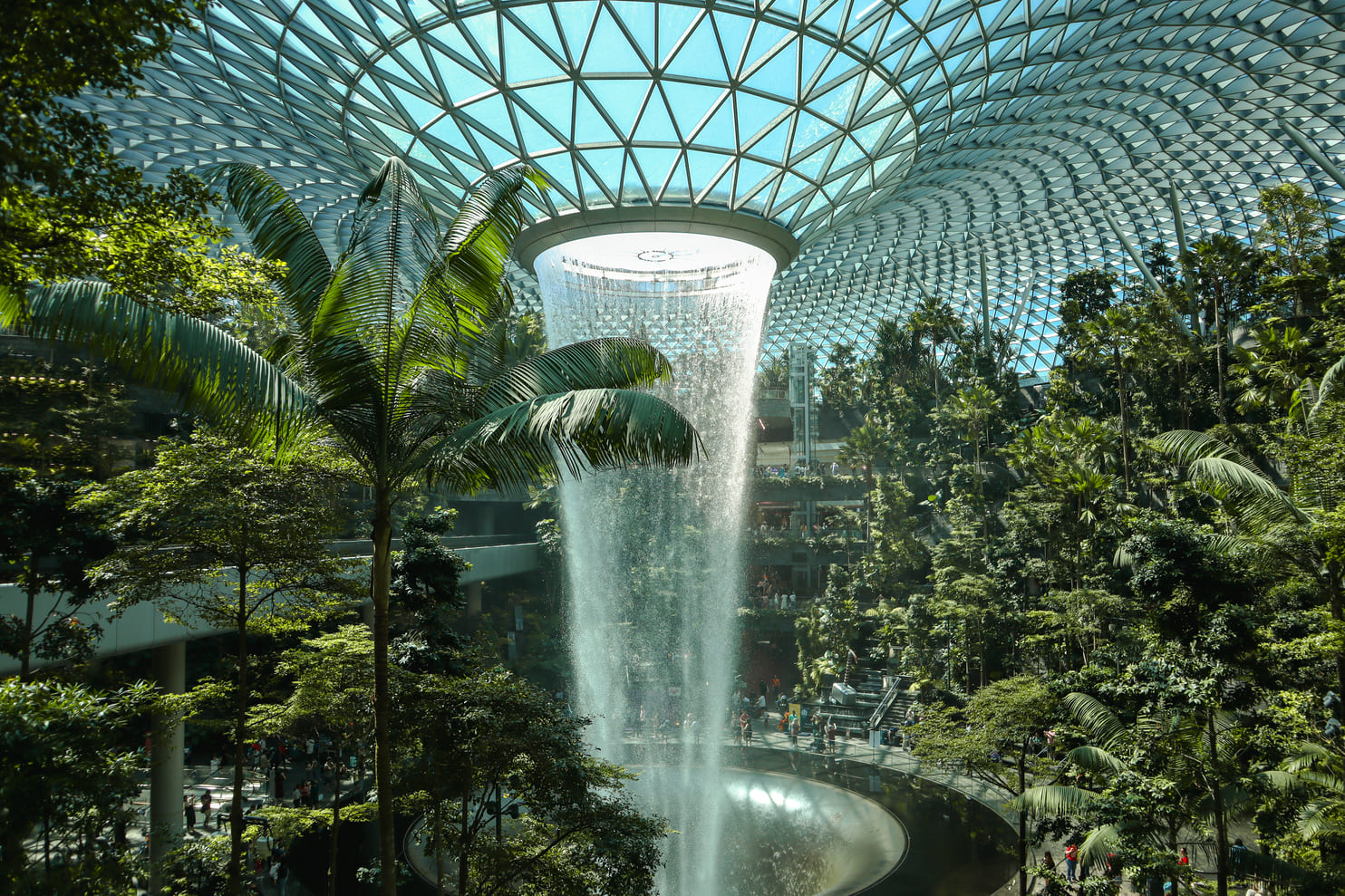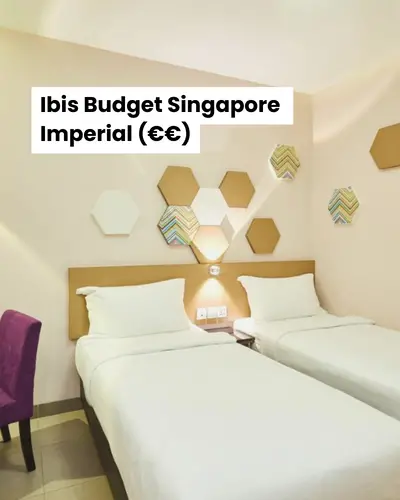Singapore is linked with modernity and innovation, making it a unique place. Usually, most tourists visit Singapore together with other countries in Southeast Asia, like Malaysia or Thailand, for example. This is because Singapore is actually one of the best gateways to this region of the world.
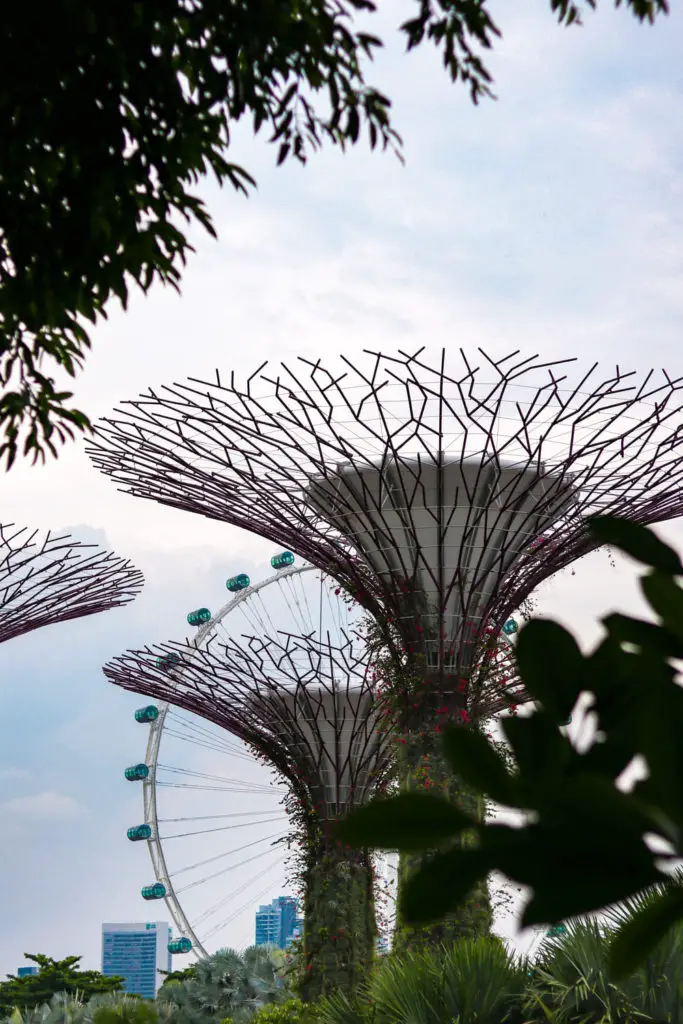
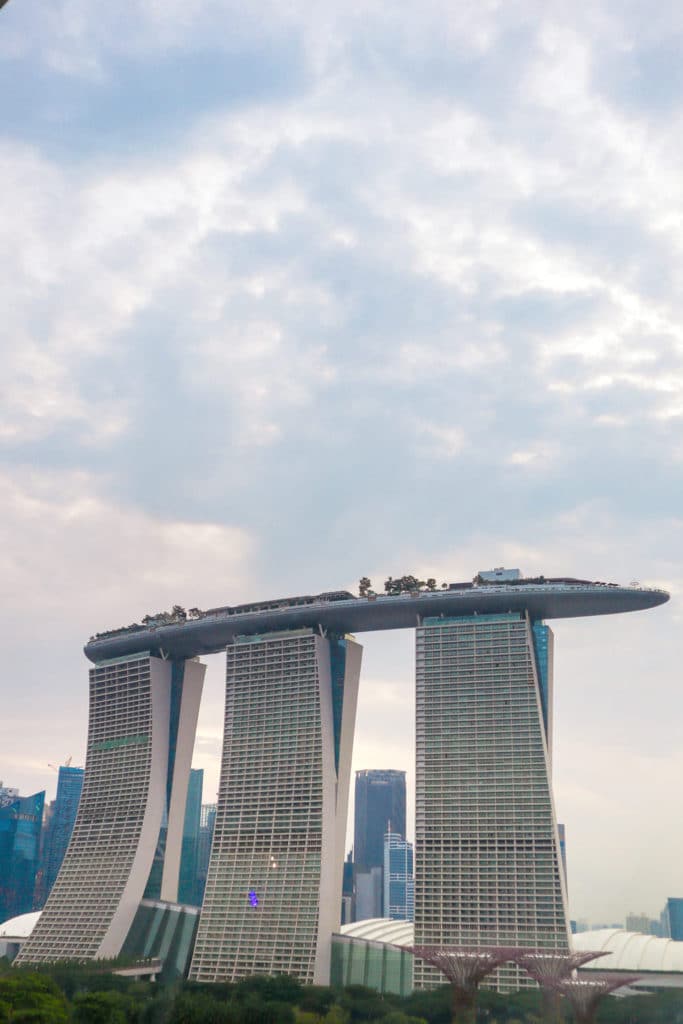
Despite its small size, there are plenty of things to do in Singapore. And, for this very reason, throughout this blog post, you can find a Singapore itinerary for 4 days, as well as many other tips to visit Singapore.
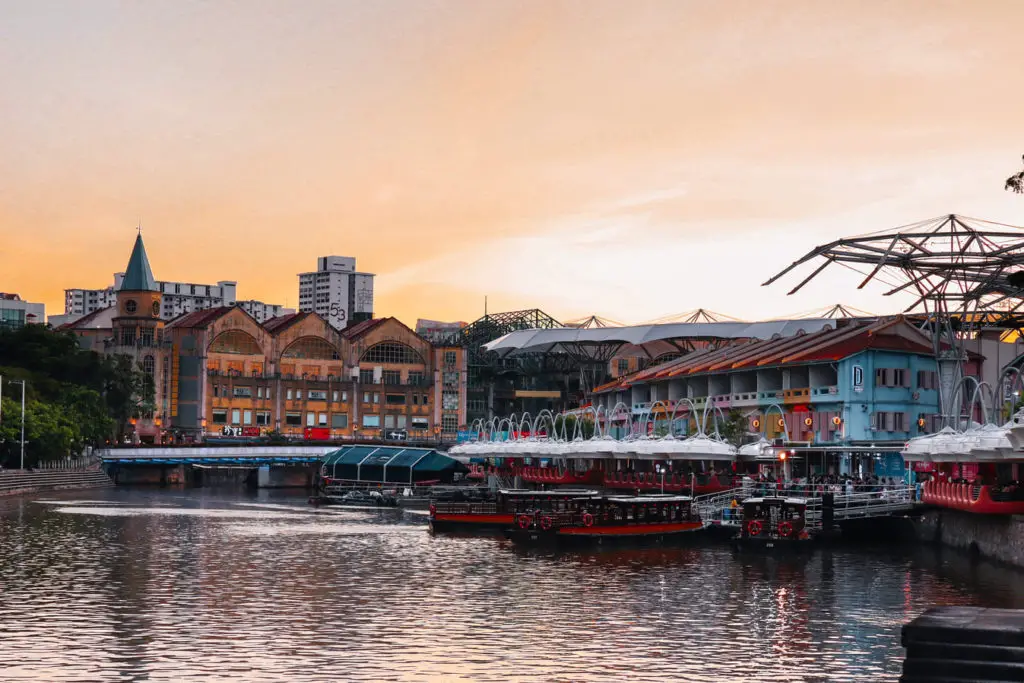
Singapore is one of the smallest countries in the world, at only 725 km². But it is full of surprises. There are only a few people who don’t fall in love with this country. So, continue reading to find out the perfect 4 days itinerary for Singapore.
How many days do you need in Singapore?
Don’t let Singapore’s small size fool you. The truth is, there are many interesting things to do in Singapore 😍. Although the top sights in Singapore (e.g. Gardens by the Bay, Marina Bay Sands, Changi Airport, Merlion) are visitable in 2 days, I recommend spending a few more days in Singapore.

Singapore is very dynamic and has some less obvious points of interest that should also be added to the list of places to visit in Singapore.
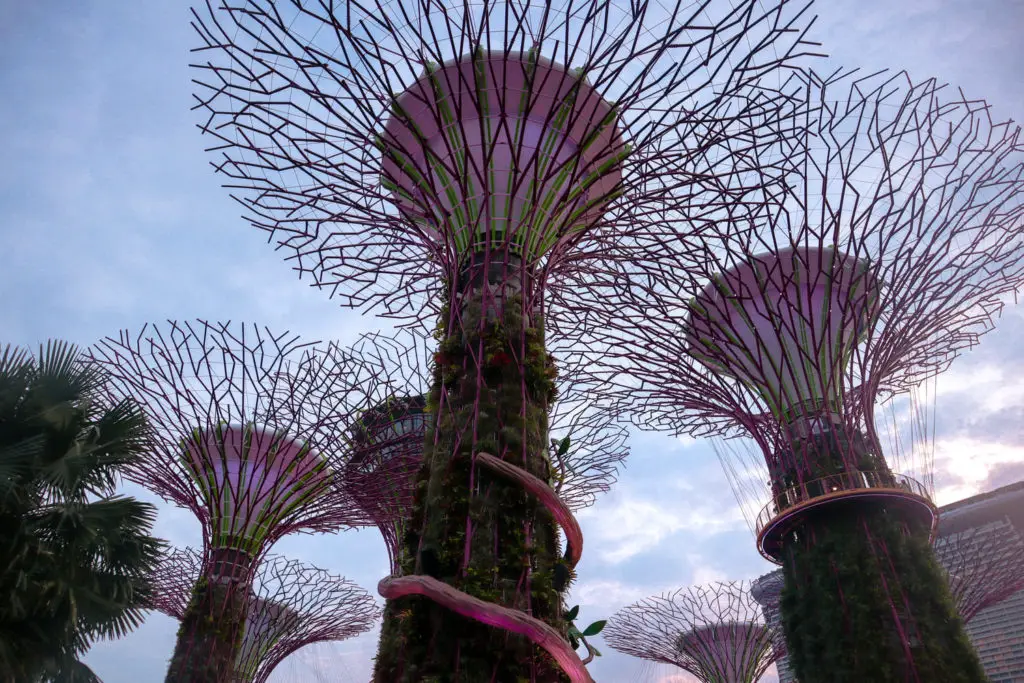
Thus, I recommend at least 3 full days to visit Singapore. However, if you have one more day available, do not hesitate to add it to your Singapore itinerary. If you choose to visit Singapore in 4 days, you will have the opportunity to visit some further attractions, such as Sentosa Island and/or Pulau Ubin.
What is the best time of the year to visit Singapore?
Temperatures in Singapore are high and very constant all year round. However, although temperatures rarely exceed 30 °C, due to the humidity in the air, the real feel is much higher. Singapore is very hot indeed, so you should go prepared for it!
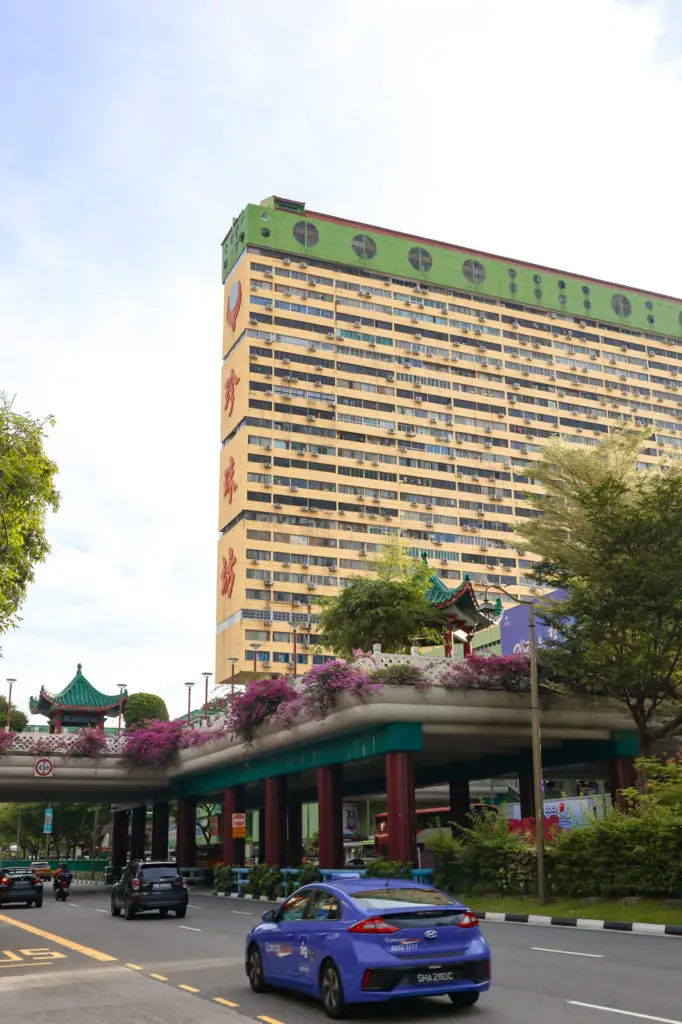
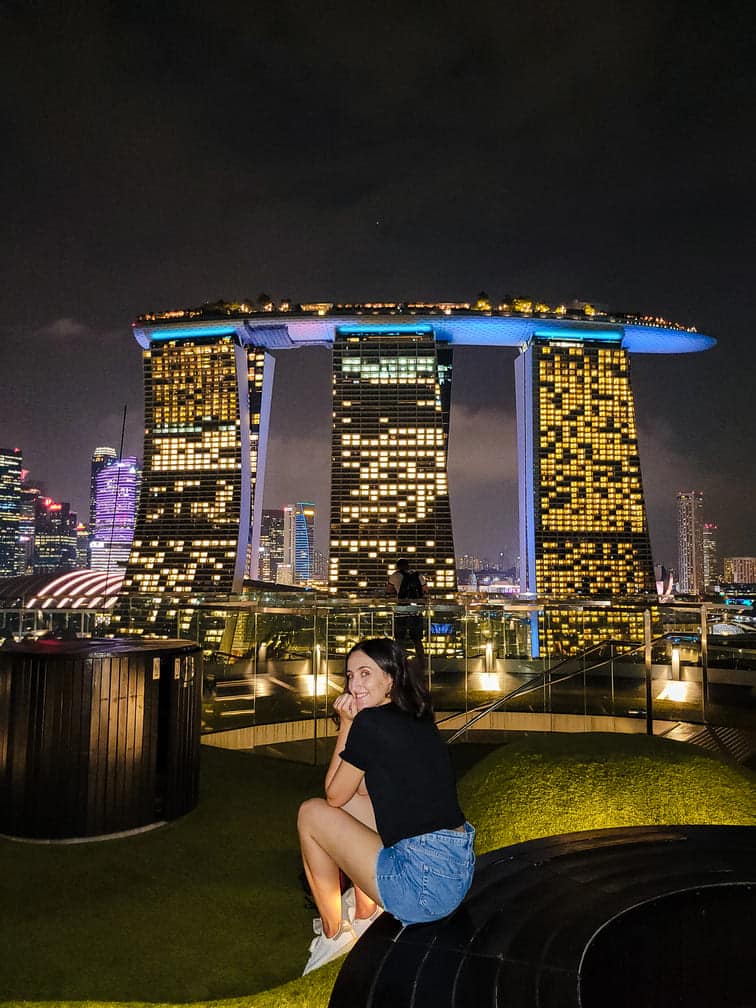
In fact, any time of the year is a good time to visit Singapore, as it is never that cold. However, be aware that November to January is the rainy season and June and July are the hottest months of the year.
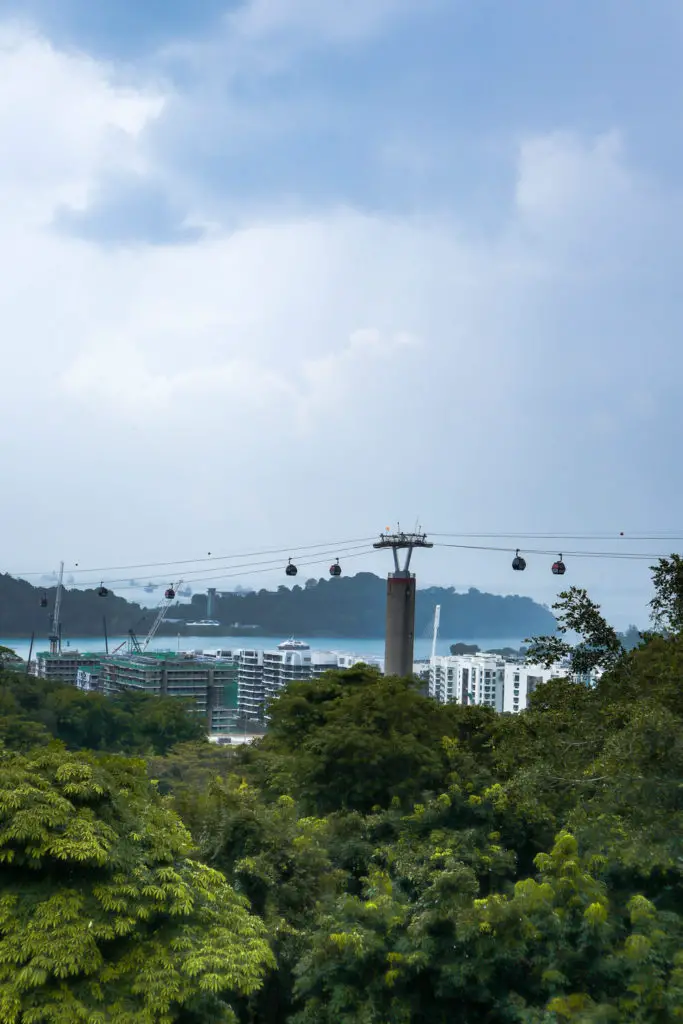

Therefore, February to May is probably the best time to visit Singapore, as it is less likely to rain and temperatures are milder. However, February is also one of the busiest months due to Chinese New Year celebrations, so don’t forget to take that into consideration.
💡 EXTRA TIP: Singapore’s weather is always a bit uncertain and, as such, even during the dry season it is not that unusual for it to rain. Therefore, I recommend that you always carry a waterproof jacket or an umbrella. I, for example, carried this one from Decathlon all the time and it came in very handy.
How to get to Singapore?
By plane
Although there are two airports in Singapore (Changi and Seletar), most international flights arrive at Changi Airport!
Changi Airport has excellent connections to the most diverse locations in the world. Despite the great distance, there are some direct routes between some European cities and Singapore, such as:
- London (British Airways, Qantas, Singapore Airlines)
- Barcelona (Singapore Airlines)
- Paris (Air France, Singapore Airlines)
- Zurich (Singapore Airlines, Swiss)
- Rome (Singapore Airlines)
- Milan (Singapore Airlines)
- Frankfurt (Lufthansa, Singapore Airlines)
- Berlin (Scoot)
- Munich (Lufthansa, Singapore Airlines)
- Athens (Scoot)
- Amsterdam (KLM, Singapore Airlines)
- Copenhagen (Singapore Airlines)
- Helsinki (Finnair)
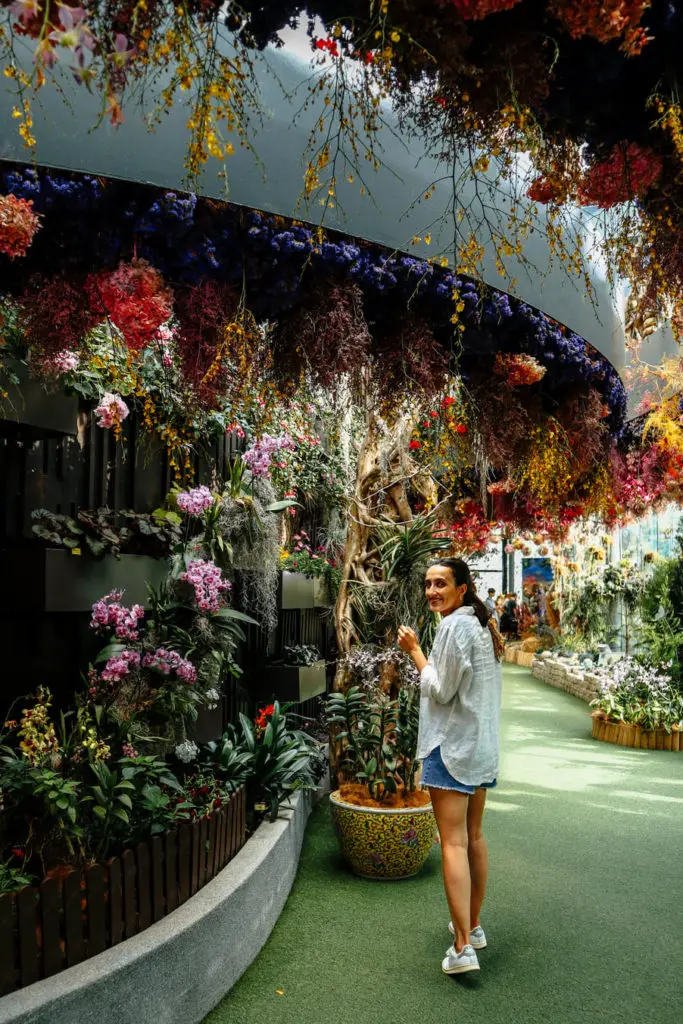
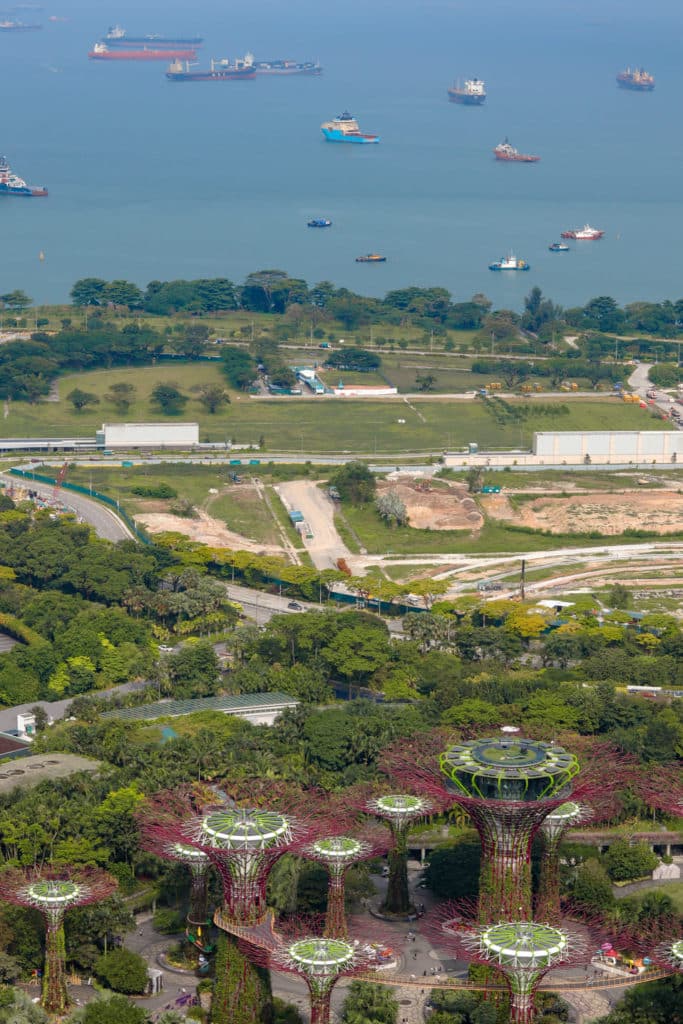
However, in my case, I flew via Geneva (Switzerland) with a stopover in Abu Dhabi on Etihad. It wasn’t a direct flight, but considering the price, it was worth it.
By bus
Another very popular option for getting to Singapore for those already in South East Asia is by bus from Malaysia. The closest major Malaysian cities to Singapore are Melaka (3h – 3.5h) and Kuala Lumpur (4h – 5h).
💡 EXTRA TIP: Use 12go to find your ideal bus trip between Singapore and Malaysia.
What documents do you need to enter Singapore?
As a citizen with a Portuguese passport, I am entitled to a free visa valid for 90 days to enter Singapore. However, it is mandatory to fill in the Singapore Arrival Card (SGAC) 3 days before arrival in the country.
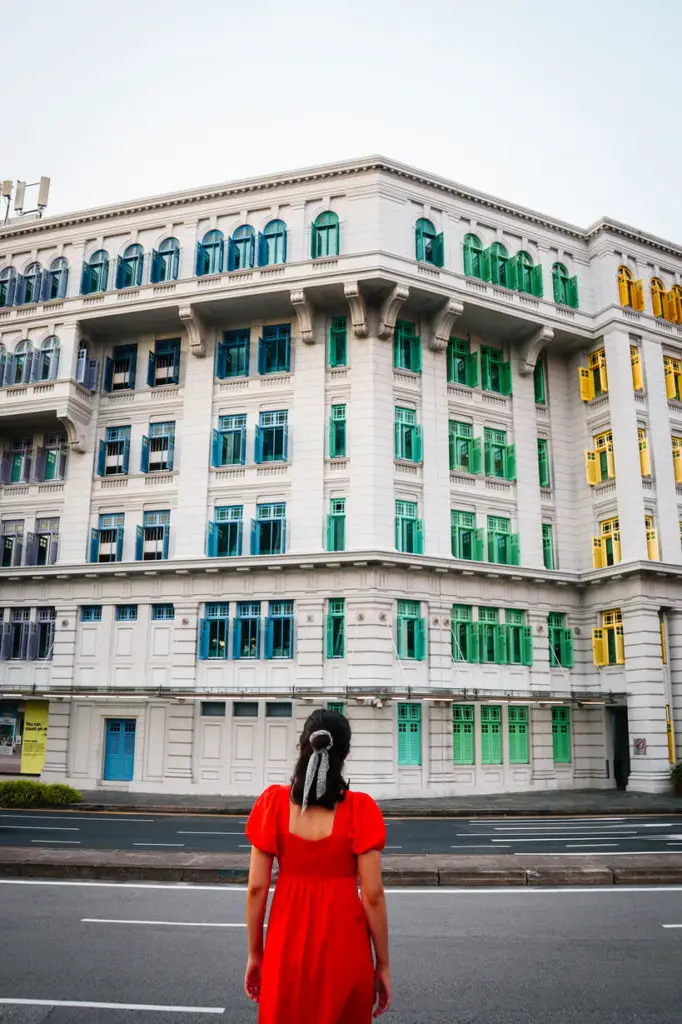
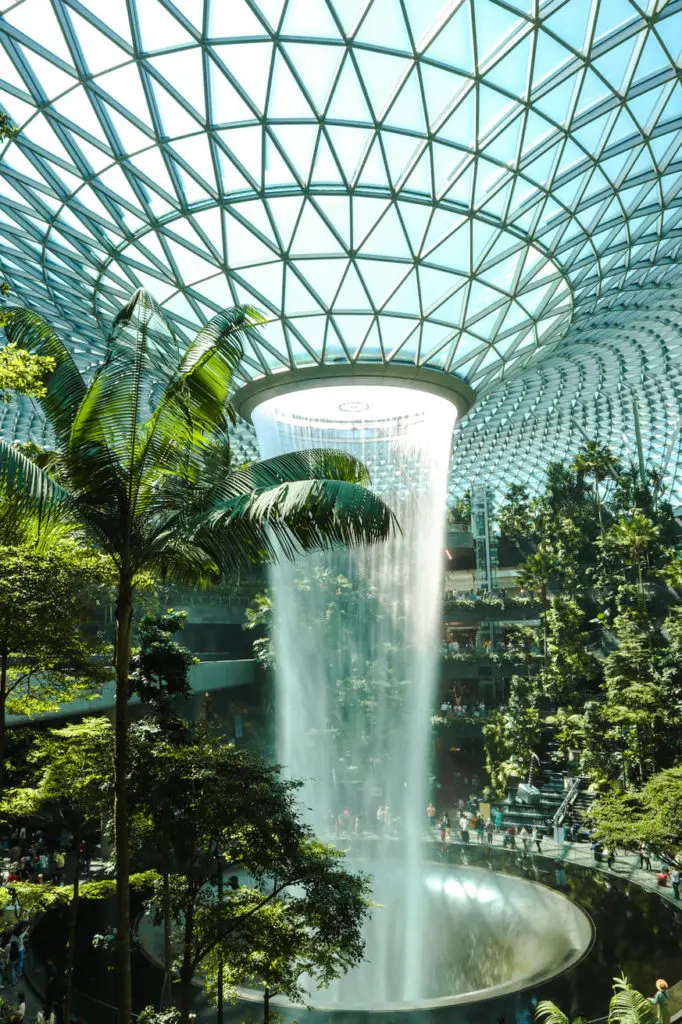
On arrival at Singapore airport, the process at the immigration checkpoint was quite quick, simple and fully digital.
💡 EXTRA TIP: Passports must be valid for at least 6 months. For the most up-to-date information, please click here.
If you have another nationality, I suggest you check the specific conditions for entry into Singapore here.
How to get from Singapore airport to city centre?
There are several ways to get from Changi Airport to downtown Singapore.
Bus
- Terminals 1, 2 and 3: buses 24, 27, 34, 36, 53, 110 or 858
- Terminal 4: bus 24, 34, 36 and 110
The trip can be paid for with a bank card or with cash (in this case, beware that the driver won’t give you any change) and takes about 1 hour.

MRT Train
There is also a train option to reach the city centre. At the airport, just look for the signs saying “Train to the city”.
- Option 1: take the train at Changi Airport (CG2) to Tanah Merah (EW4) then change to East West line towards Tuas Link (EW33)
- Option 2: take a train from Changi Airport to Tanah Merah and from there change to the East West line in the direction of Pasir Ris.
Again, payment can be made with a contactless bank card. The journey’s price is calculated based on the distance travelled. The duration of the journey depends on the destination but can take between 50 minutes to around 1 hour.
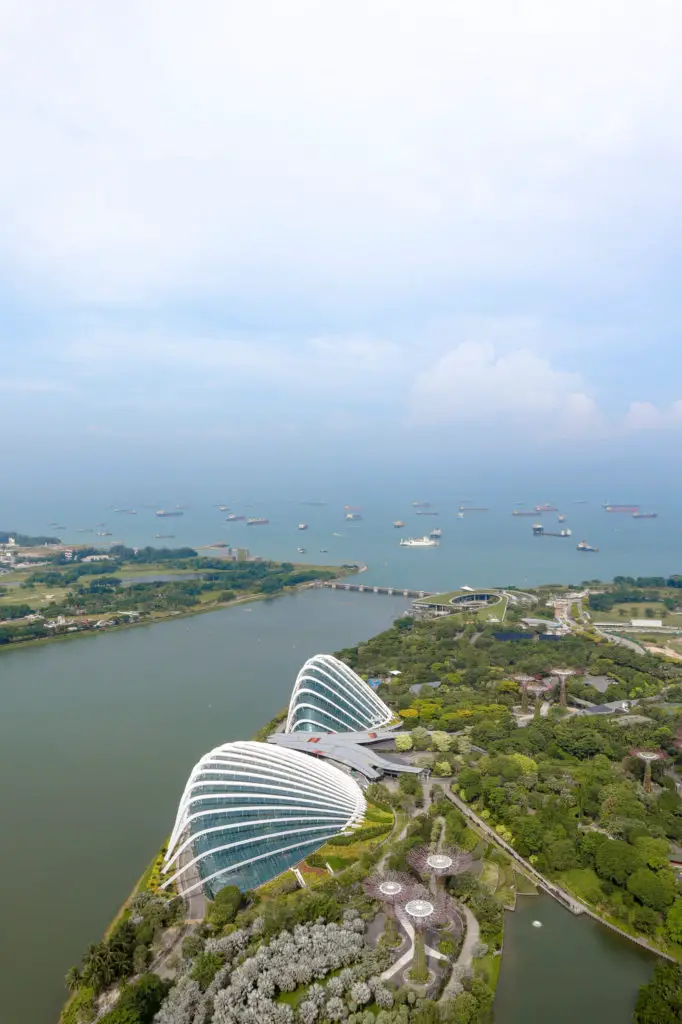

Airport shuttle
There are also shared vans that stop at some of the city’s main hotels. The trip takes about 30 minutes and costs about 10 SGD (~6.8€) per adult. Tickets can be purchased at the Ground Transport Concierges in the arrivals’ hall. The shuttle runs every hour from 7 am to 11 pm. More information here.
Taxi or private transfer
Lastly, you can opt for the most convenient and fastest option – a taxi or private transfer. The journey takes considerably less time (about 20–30 minutes) and costs between 20-30 SGD (~ 14€ – 20€).
If you don’t want to worry about a thing, you can also choose to book a private transfer service in advance. I highly recommend the service of Welcome Pickups.
How to get around Singapore?
Although Singapore is relatively small, its main attractions are often a bit far away from each other. So the most convenient way to get around Singapore is actually by public transport.
💡 EXTRA TIP: Alternatively, there is also the Grab service, which is an alternative to Uber in Asia. Although I haven’t used it very often in Singapore, it can be an excellent solution in some situations.
Singapore has a good bus and train/metro (MRT) network. If you use Google Maps, it is relatively simple to work out which stations to use and how to get from one place to another.
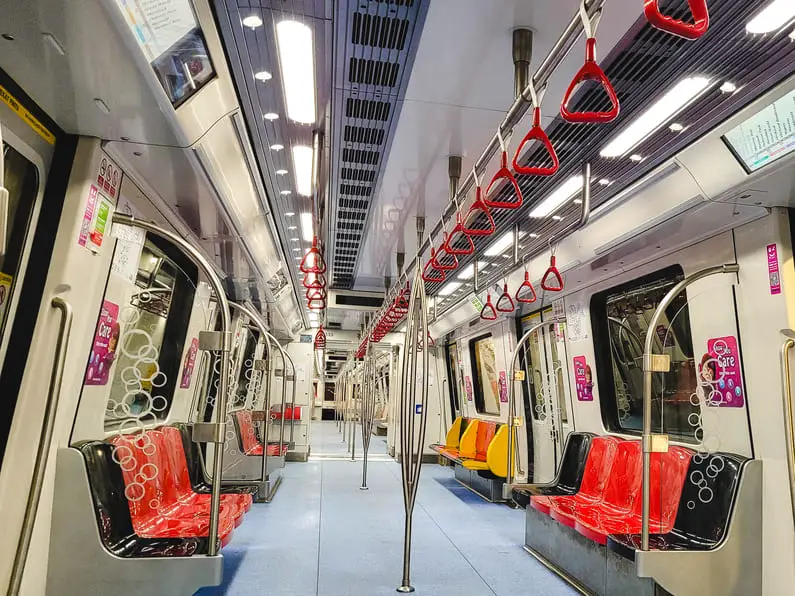
Since the price of each trip depends on the distance travelled, the simplest way to pay for a trip is with a Visa or Mastercard contactless card.
It is normal for locals to use EZ-Link cards (they cost 10 SGD, of which 5 SGD can be used on trips).
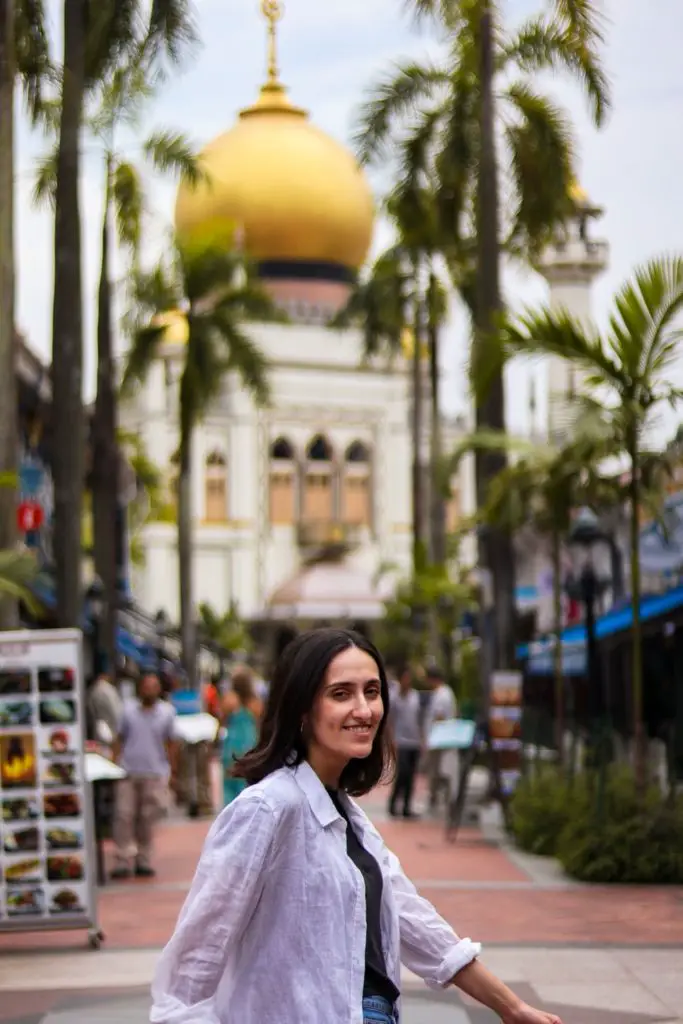
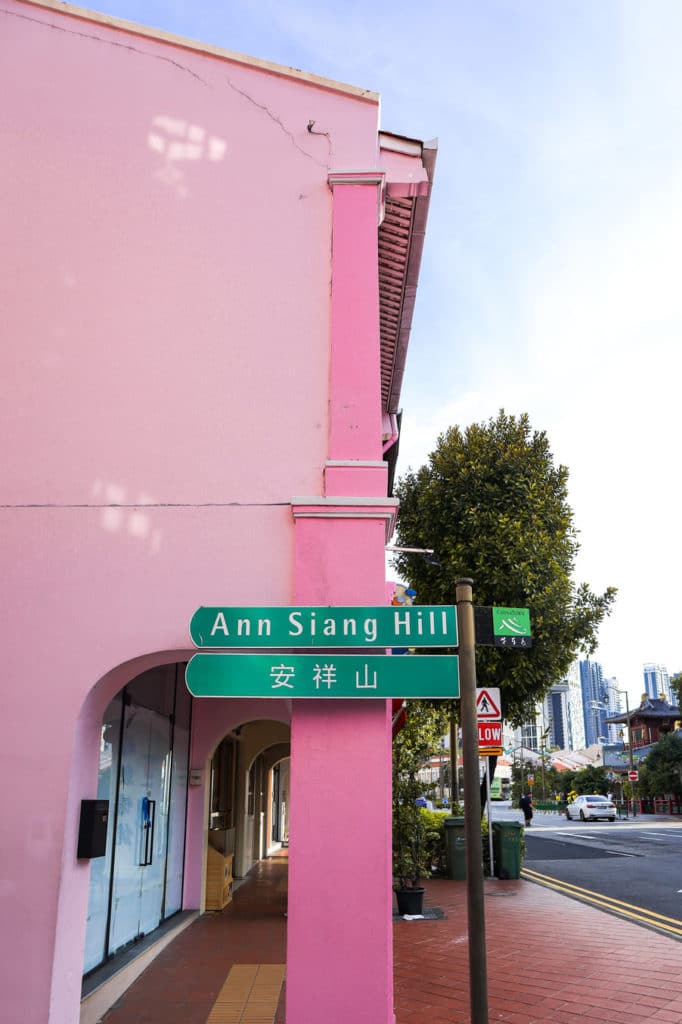
However, there is a simpler option for tourists: Singapore Tourist Pass. This pass gives access to an EZ-Link card with unlimited travel for 1 (22 SGD), 2 (29 SGD) or 3 days (34 SGD). More information here.
📝 USEFUL INFORMATION: In my opinion, the easiest option is to use a bank card. For example, I used my Revolut card to ride public transports in Singapore and it worked perfectly. Plus, I never spent anywhere near the amount mentioned in the Singapore Tourist Pass.
What is the currency in Singapore and how to pay?
The currency used in Singapore is the Singapore dollar (SGD). In June 2023, the exchange rate was: 1 SGD = 0.68€. Singapore is a very cashless society, so you can easily visit Singapore without the need to withdraw cash.
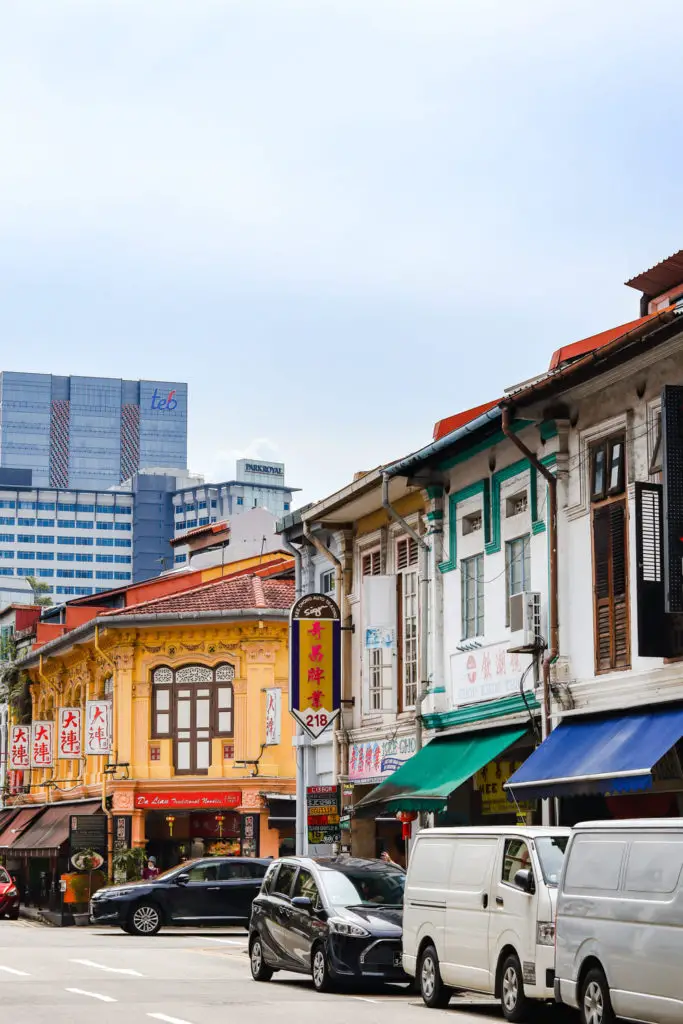
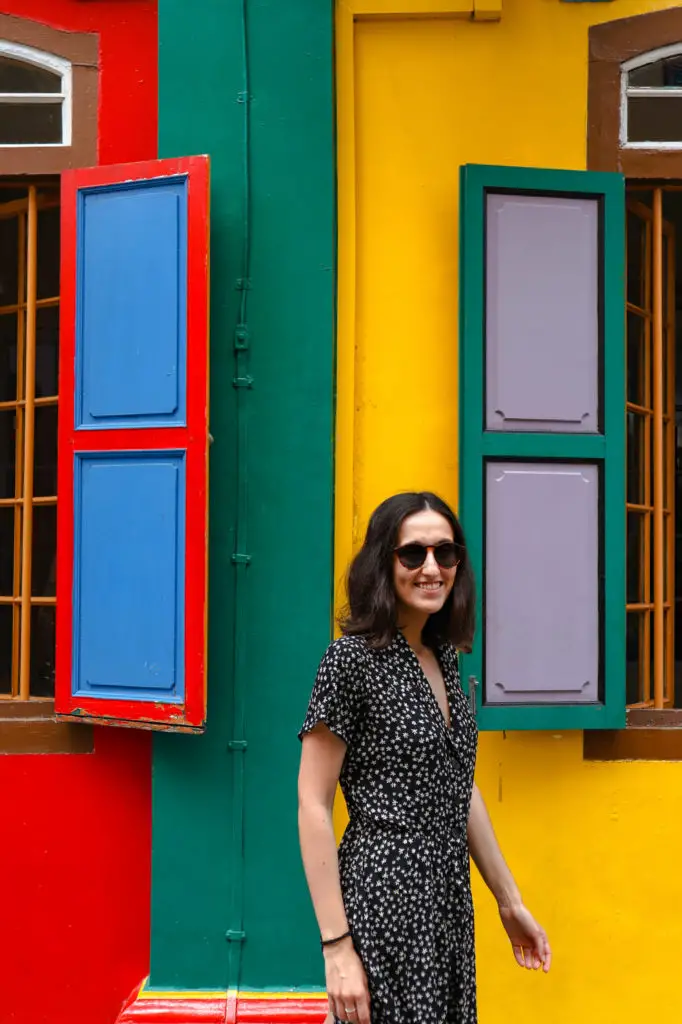
To make purchases with a currency other than the one I usually use (Euro), I always use the Revolut card, which has many advantages. One of the biggest advantages of the Revolut card while travelling is the fact it does not charge additional fees for using a different currency.
If you do not yet know the advantages of having a Revolut Card, you can find out more here.
Where to withdraw money in Singapore without paying fees?
Although it is rare for you to have to pay with cash in Singapore, it is best to be prepared and always have some Singapore dollars at hand. I only withdrew cash once and I did it at HSBC bank with my Revolut card. I didn’t pay any additional fees beyond the exchange rate at the time.
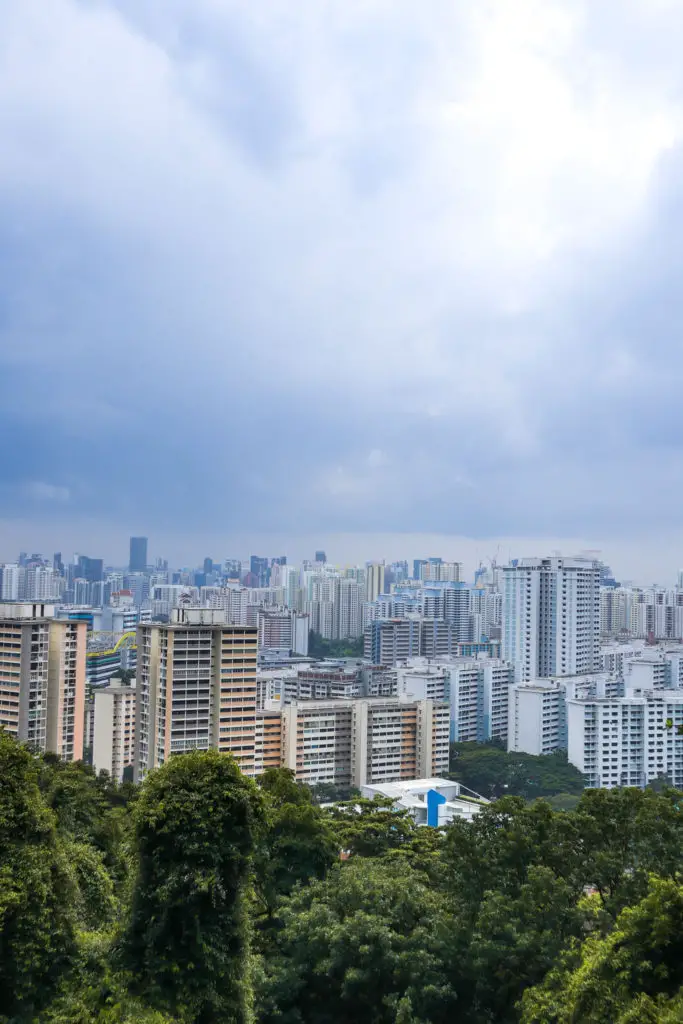
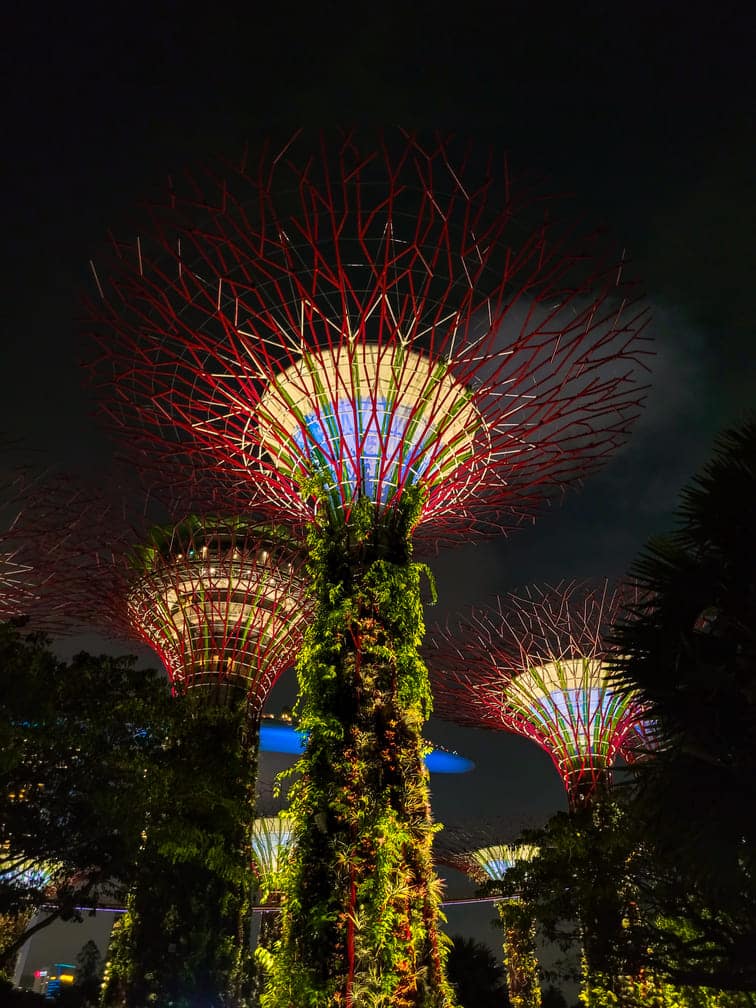
How to have internet in Singapore?
The simplest way to be always contactable in Singapore is to buy an eSIM. This is the most convenient option as you can have internet as soon as you arrive in Singapore. For example, AirAlo offers several e-SIM options starting at 4.5€. Use MARIAN4315 for 3$ off on your first order.
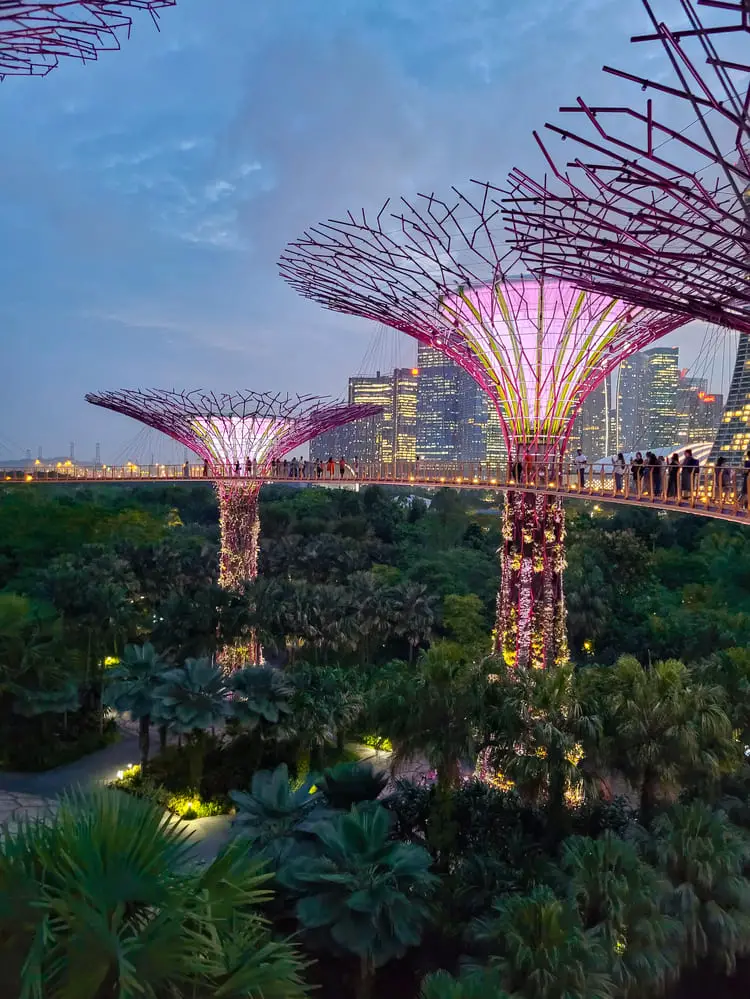
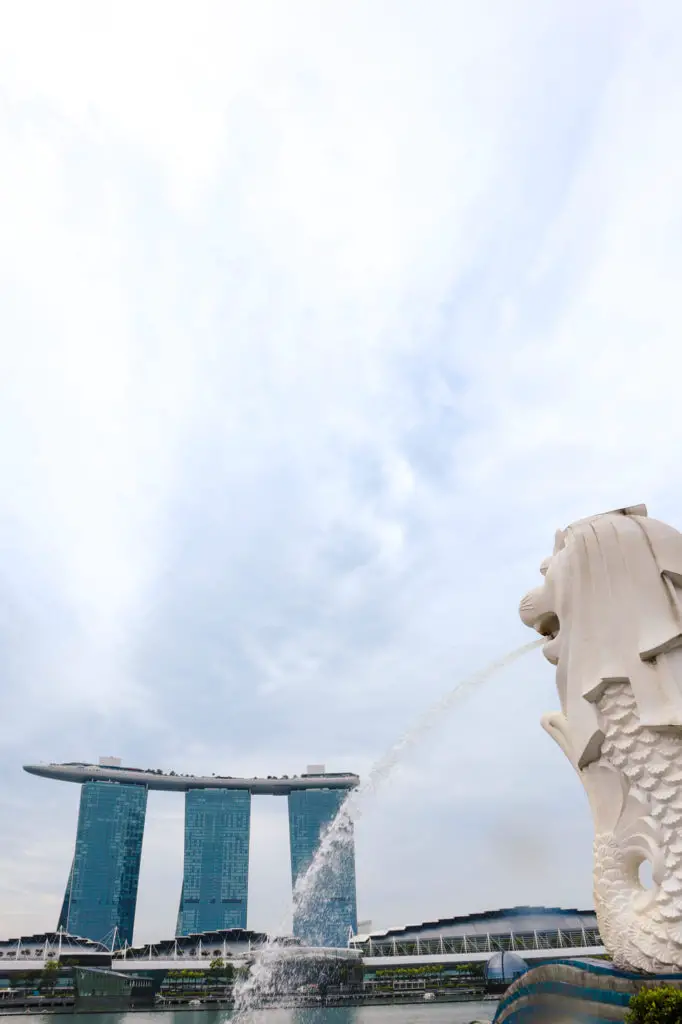
If you’re not a fan of eSIM cards, you can always opt to buy a physical SIM card. There are several options available at Changi Airport. One of the most affordable seemed to be Singtel where 100 GB for 14 days cost 12 SGD (~8€). This option also included an additional 3 GB that could be used in Malaysia, Australia, Indonesia and Thailand.
How to save some money in Singapore?
Activities in Singapore are quite expensive, so depending on what you intend to visit, it may make sense to buy one of those passes that offer discounts at the main attractions.
I personally didn’t buy any pass as I didn’t think it would pay off for what I was going to visit, but there are a few options available. Some of the included attractions are for example the Flower Dome, Cloud Forest or Floral Fantasy at Gardens by the Bay, a cocktail at Raffles Hotel or the Sky Pass for the Singapore cable car.
Accommodation in Singapore
When I was in Singapore, I stayed for two nights at JEN Singapore Orchardgateway by Shangri-La. Apart from the hotel being quite modern, there were especially two things that made me love this hotel. Firstly, the wide selection of food at breakfast. Secondly, the huge pool with great views of Singapore.
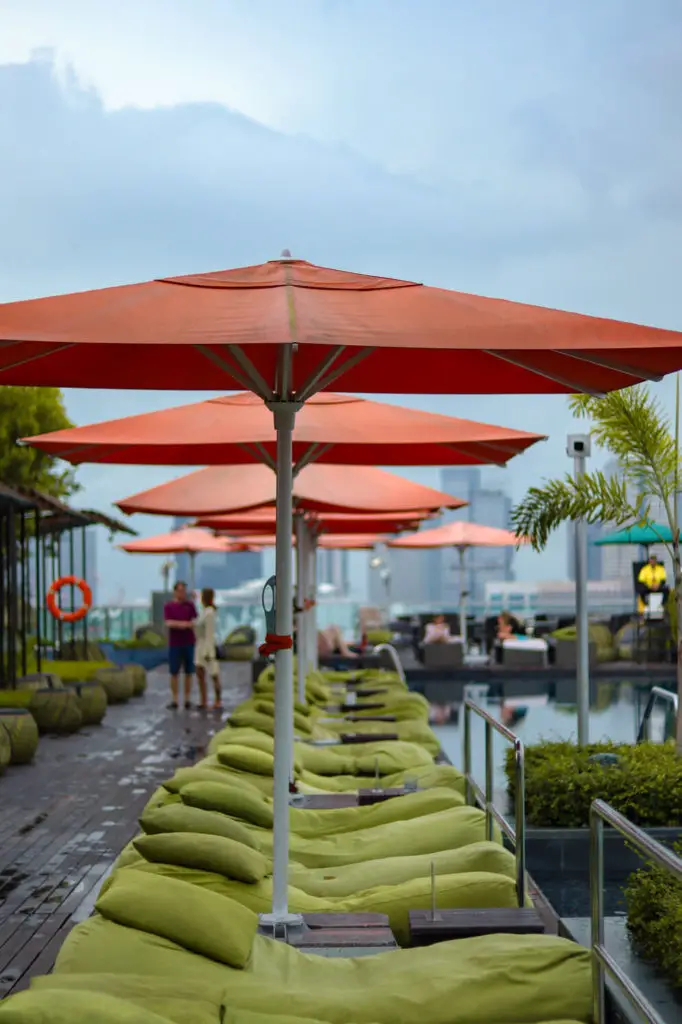

The pool has a bar and snack service, which comes in really handy and will definitely make you want to stay longer there. Additionally, the pool is open until quite late, which makes it possible to take a dip in the pool after the city lights turn on.

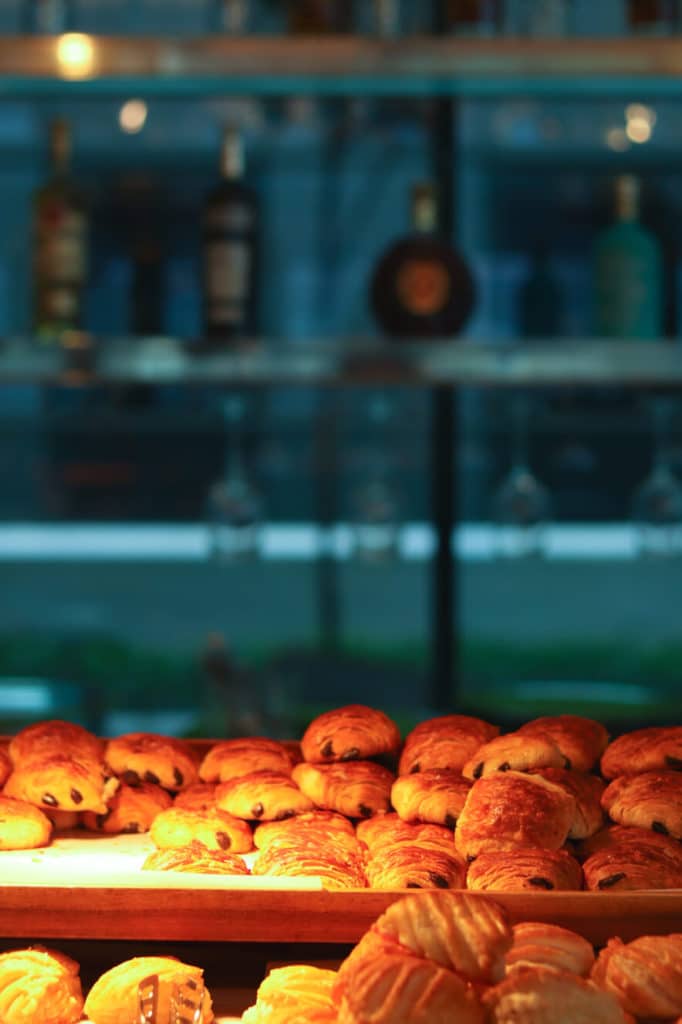
Finally, the hotel’s location is very central and there is an MRT station right next door, making it very easy to get around Singapore.
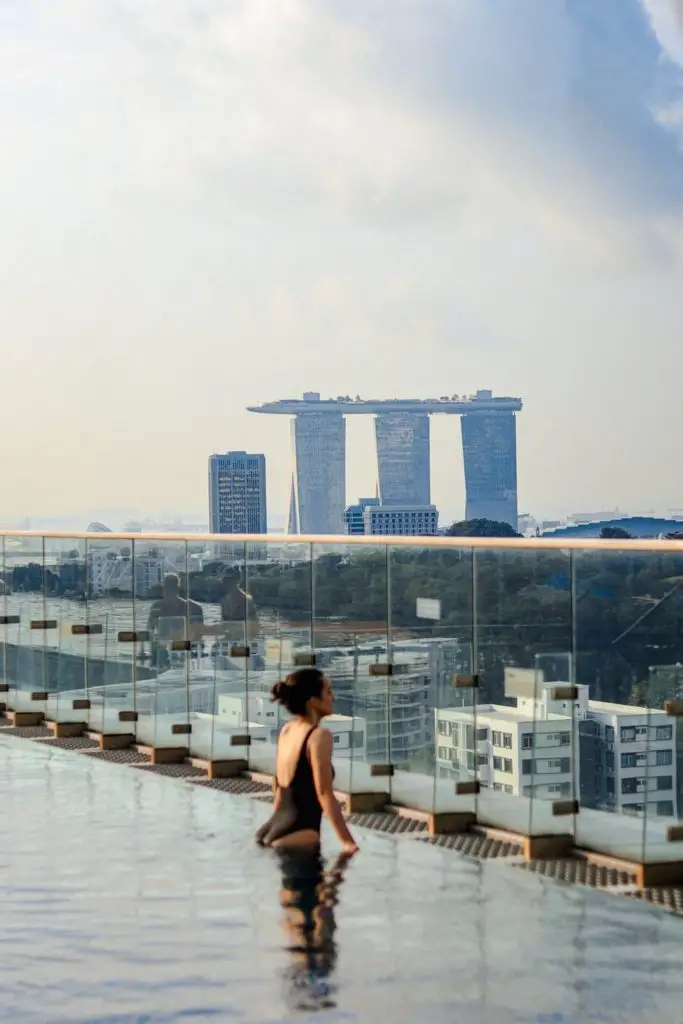
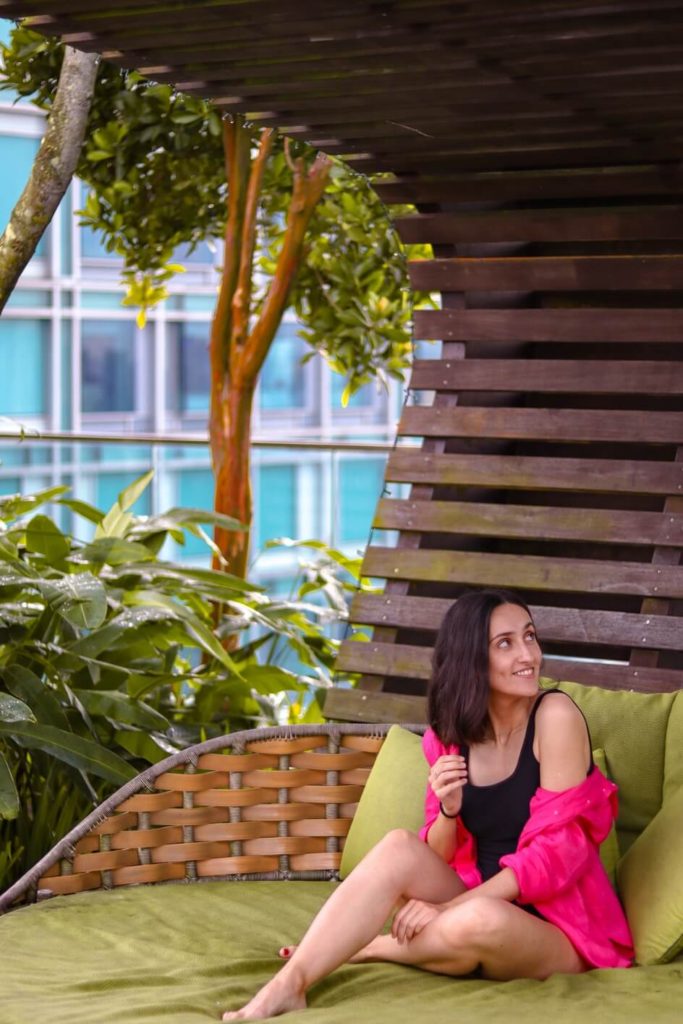
Anyway, I leave here other options available in the city for different types of budgets:
💼 TRAVEL INSURANCE: Unexpected events happen anywhere in the world, so I always recommend getting travel insurance. I regularly use Heymondo, which offers some of the highest coverages on the market at very competitive prices. As well as covering medical expenses, Heymondo’s insurance also covers the loss or theft of luggage, electronic equipment and more. They also have a 24/7 customer service through their App. As A Ticket to Take Off reader, you get a 5% discount when purchasing Heymondo insurance. The purchase must be made using this link, and the price shown on the website already includes the discount.
Activities & tours in Singapore
Singapore Itinerary: 4 days – Map
To help you better plan your trip to Singapore, I’ll share a map with the best things to do in Singapore.
Singapore Itinerary: 4 days – Day 1
» Changi Airport
If you’ve flown into Singapore, then you can start right away by exploring Changi Airport. Yes, I know it may seem strange to have an airport on the list of places to visit in Singapore. But Changi Airport is special 🥰.
Changi airport is one of the most famous in the world because of its originality…. you can do a bit of everything inside: from watching a film in the cinema, jumping on suspended nets in the air, and visiting the world’s largest indoor waterfall. And the list goes on!

But the main attraction is the HSBC Rain Vortex – the famous 40-metre indoor waterfall, which has the title of the largest indoor waterfall in the world.
The visit to the waterfall is one of the top free things to do in Singapore, and let me tell you, it’s a great welcome to Singapore!
💡 EXTRA TIP: Every day at 8 pm and 9 pm there is a light and sound show at the waterfall. From Friday to Sunday, the show also takes place at 10 pm. Check out the most up-to-date information here.
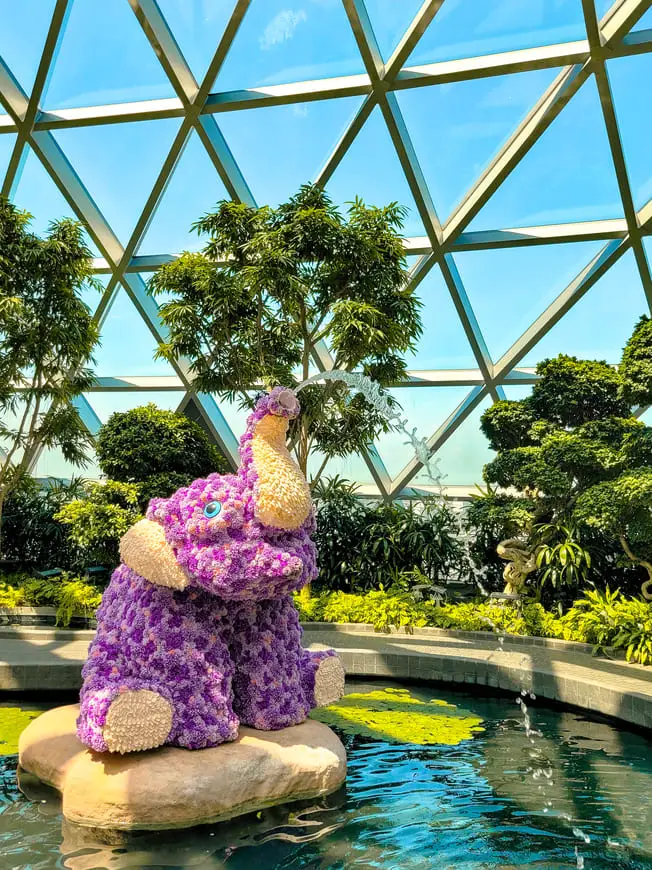
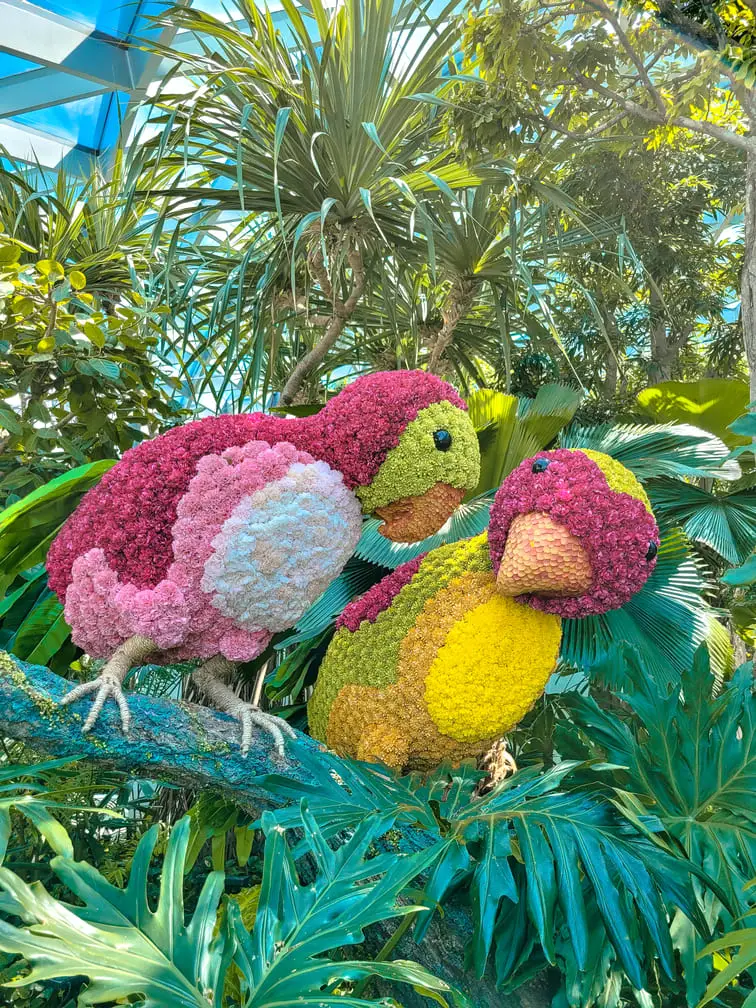
For another perspective on the waterfall, you can also visit the Canopy Bridge, suspended 23 metres off the ground. However, given the price to visit the bridge, I honestly don’t think it’s worth it. It’s cute, but if it was today, I wouldn’t pay to visit. But here’s the tip anyway 😉.
📝 USEFUL INFORMATION: Canopy Bridge is open from 10 am to 10 pm and tickets can be bought on the official website (13.9 SGD, ~9.4€) or Get Your Guide (7.8€).
But the list of attractions at Changi airport does not end there. Check the official website to find out all the things to do in Singapore airport and their prices. Some of the most popular include the Hedge Maze, Bouncing Nets, Walking Net or Mirror Maze.
» Chinatown
It’s time to leave the airport and start exploring Singapore. I suggest you start with Chinatown. What used to be an enclave of Chinese immigrants in Singapore is now one of the most vibrant areas of the city.
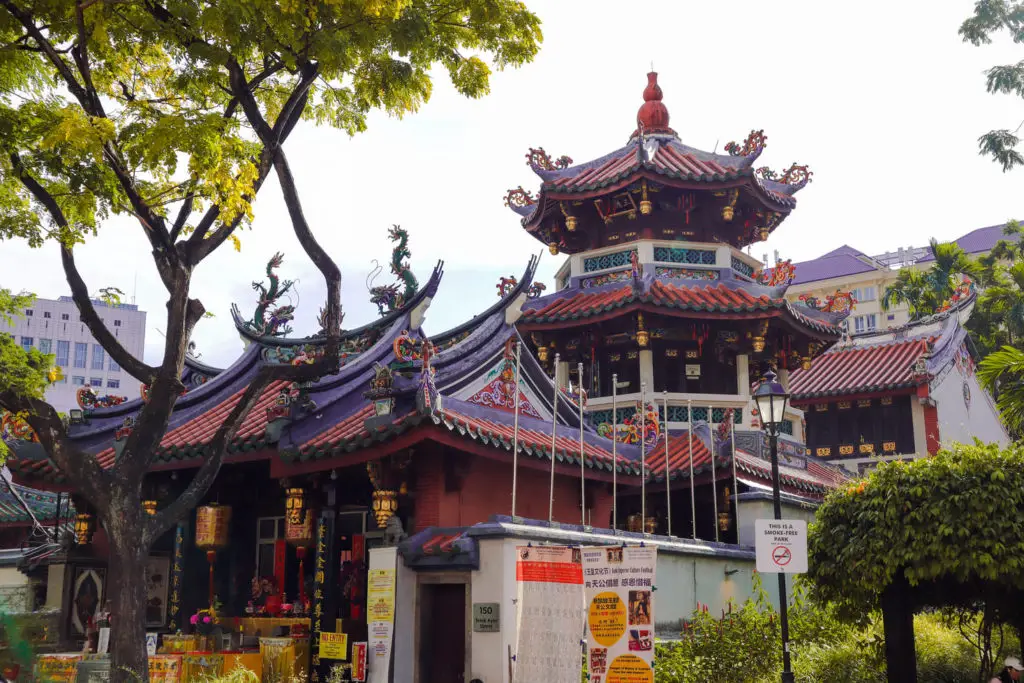
I suggest you start your Chinatown tour at Thian Hock Keng temple – the oldest Chinese temple in Singapore. This is one of the places you can visit for free in Singapore.

Another of the most important Chinese temples you can find in Chinatown is the Buddha Tooth Relic Temple, which is also a museum. Built only in 2007, this temple is well-known because it holds a relic of the Buddha’s tooth that weighs no less than 3,500 kilos, 320 of which are made from gold.
📝 USEFUL INFORMATION: It is possible to visit the inside of the Buddha Tooth Relic temple for free.
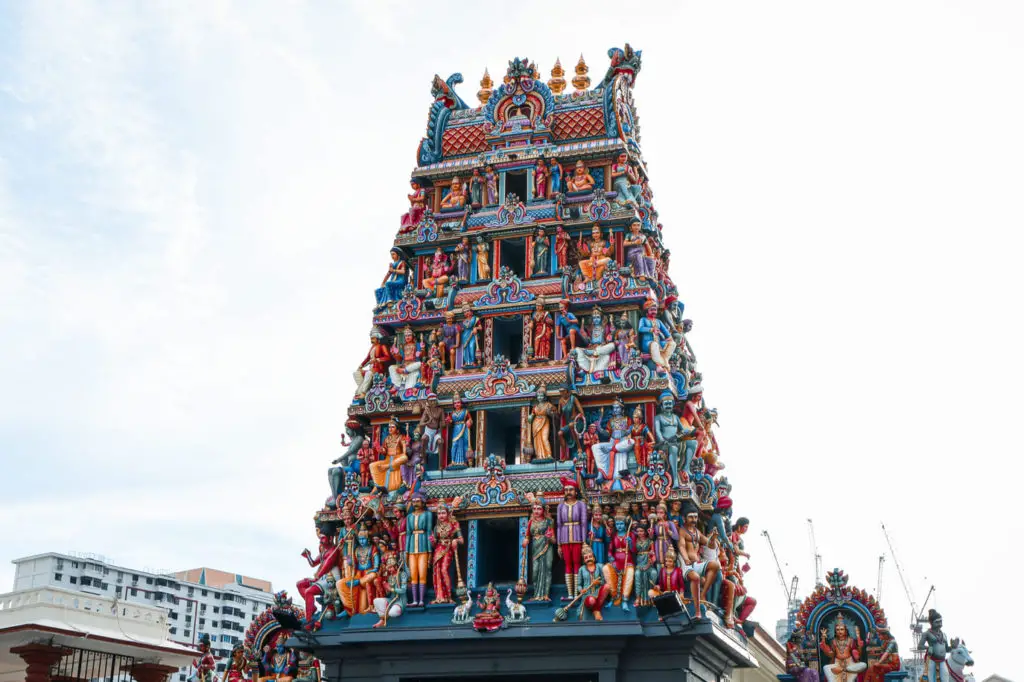
On the same street as the previous temple, we find the Sri Mariamman Hindu temple. On this street there are a Buddhist temple, a mosque and a Hindu temple, showing one of the best parts of Singapore – the harmonious coexistence of several religions.
The Sri Mariamman Hindu temple is the oldest Hindu temple in Singapore and can also be visited for free.


Having seen the main points of interest in Chinatown, I suggest you let yourself get a little lost around this area of the city, as it has some very photogenic spots 😍.
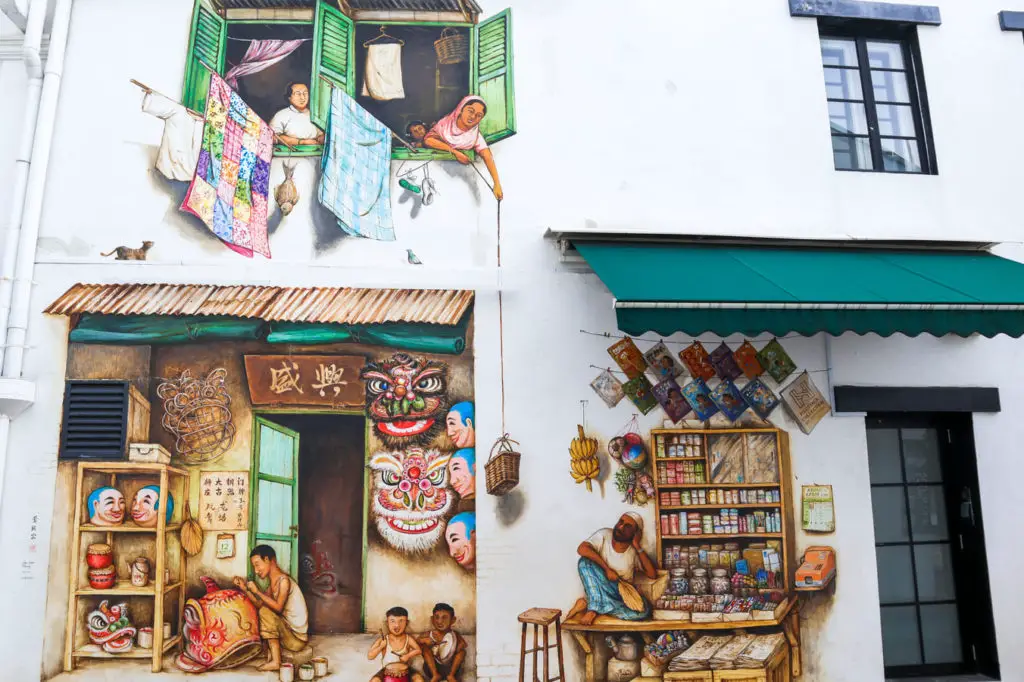
And finally, have a look at Mohamed Ali Lane for some street art pieces!
» Sang Nila Utama Garden
Set within Fort Canning Park, the Sang Nila Utama Garden is one of several gardens in this park. The park quickly transports you to Bali because of its decorative elements. Although it is not one of those must-visit places in Singapore, it is a great addition to any Singapore itinerary.
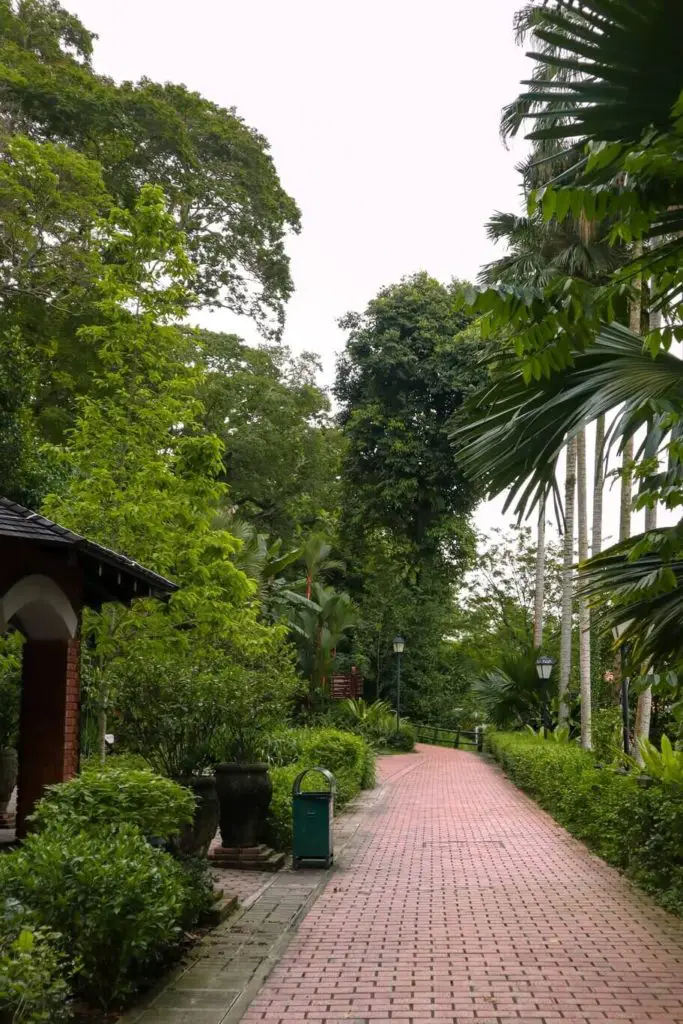
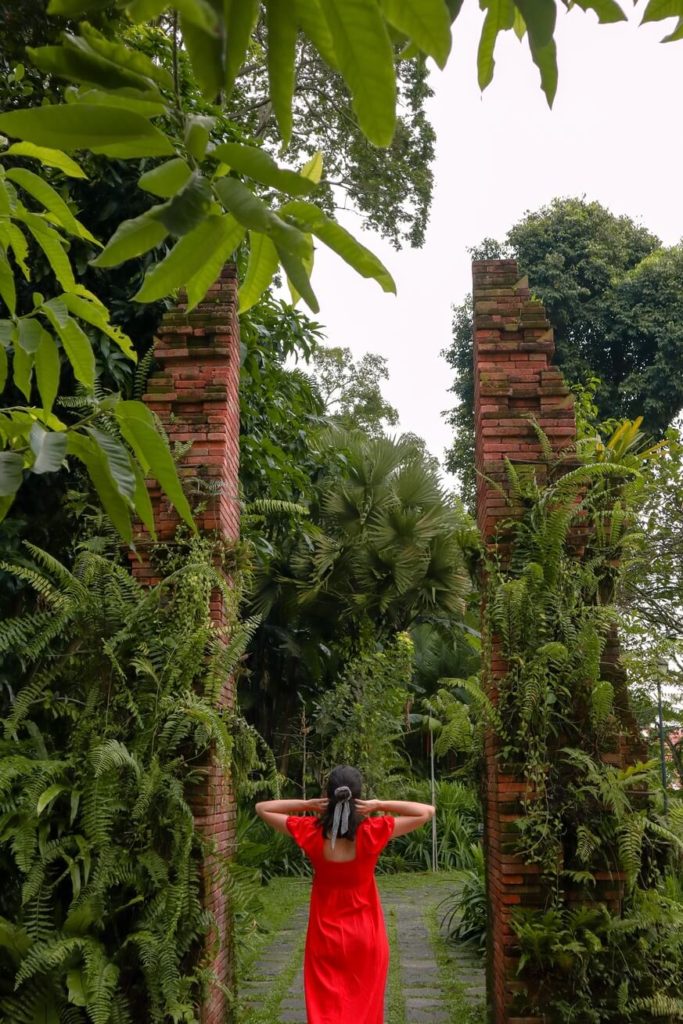
💡 EXTRA TIP: Nearby, you can also visit the Fort Canning Tree Tunnel – one of the most Instagrammable places in Singapore. I personally didn’t visit because it’s usual for this place to queue up to take photos, but it looks pretty cute 😉.
» Old Hill Street Police Station
And speaking of Instagrammable locations, the following place is just for those who love colourful houses and cute photos. It is a former police station and it is known for its colourful windows that will liven up any photo!
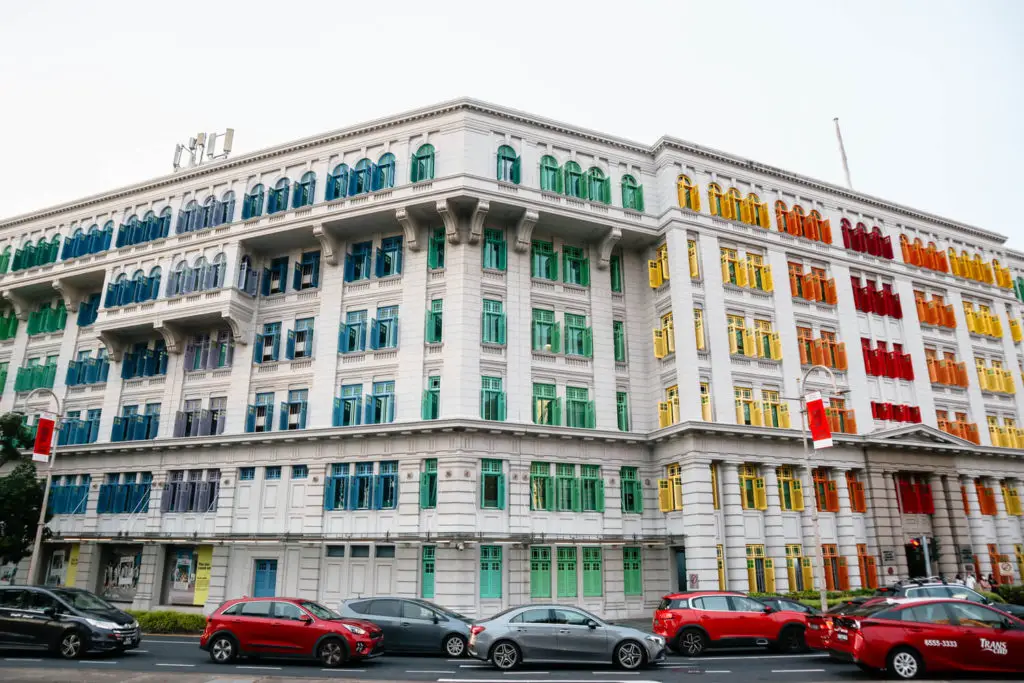
» Clarke Quay
To finish this first day in Singapore, I suggest a visit to the riverside area of the city – Clarke Quay. Here you will find lots of restaurants, bars and shops. This is one of the liveliest areas of the city, especially after the sun goes down.
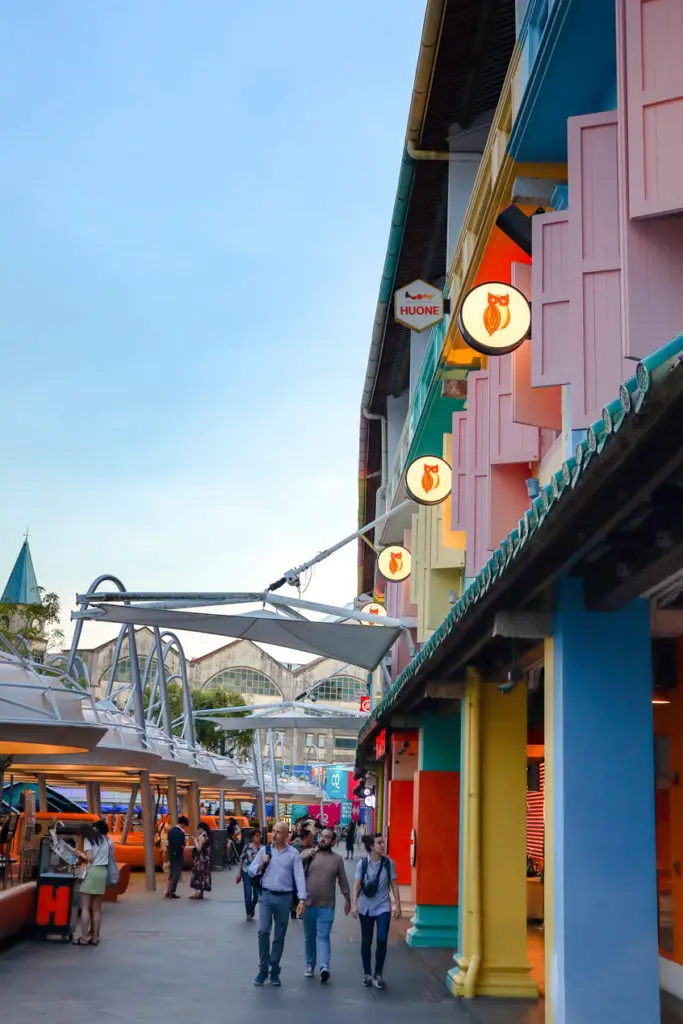

Singapore Itinerary: 4 Days – Day 2
» Orchard Road
If you fancy a bit of shopping or window shopping, Orchard Road might be the perfect place for it. It is 2.5 km long and is one of the most important shopping areas in the city.
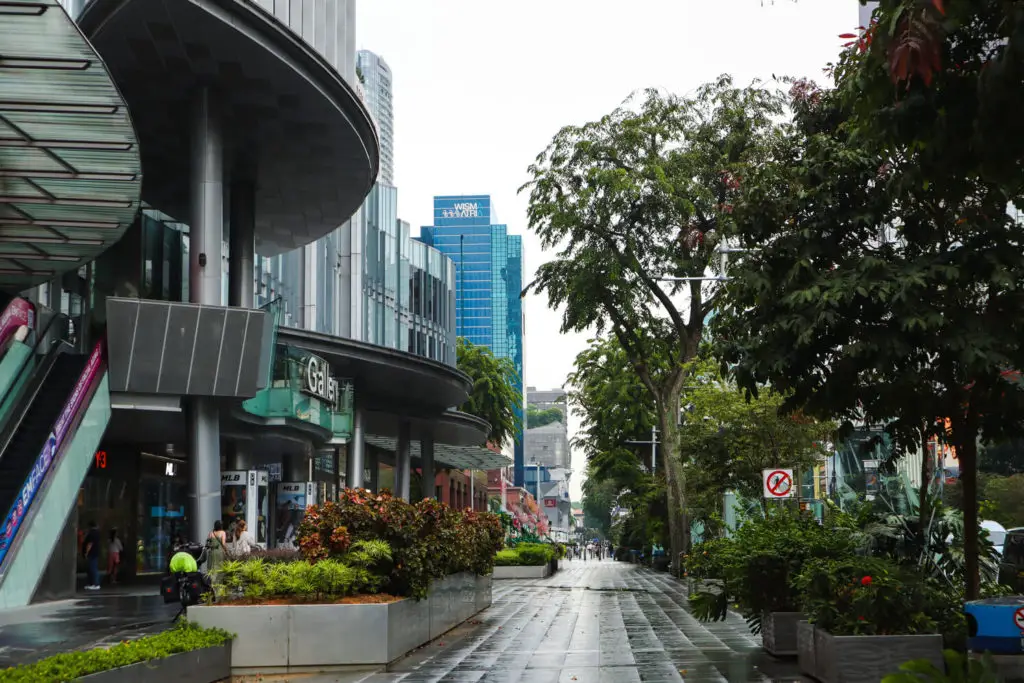
» Merlion Park
The second day of this Singapore 4 days itinerary continues to Merlion Park, where we can have superb views of Marina Bay Sands (Singapore’s most iconic building) and also take some pictures of the city’s symbol (the Merlion).

The Merlion is basically a lion with the body of a fish. Legend has it that a tiger once swam from Indonesia to Singapore and was mistaken for a lion.
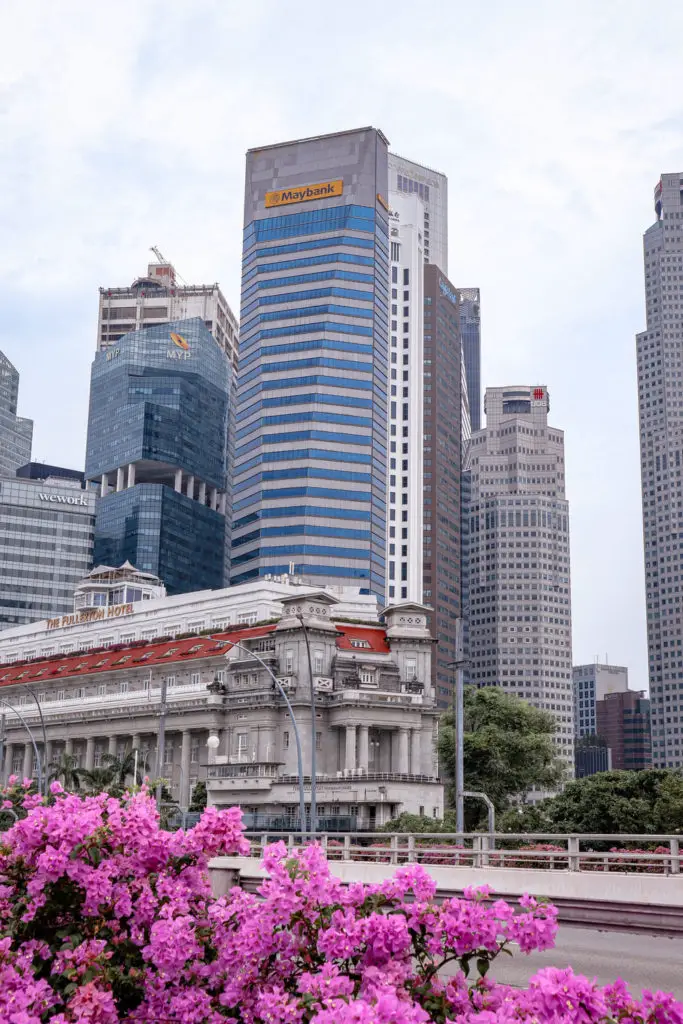
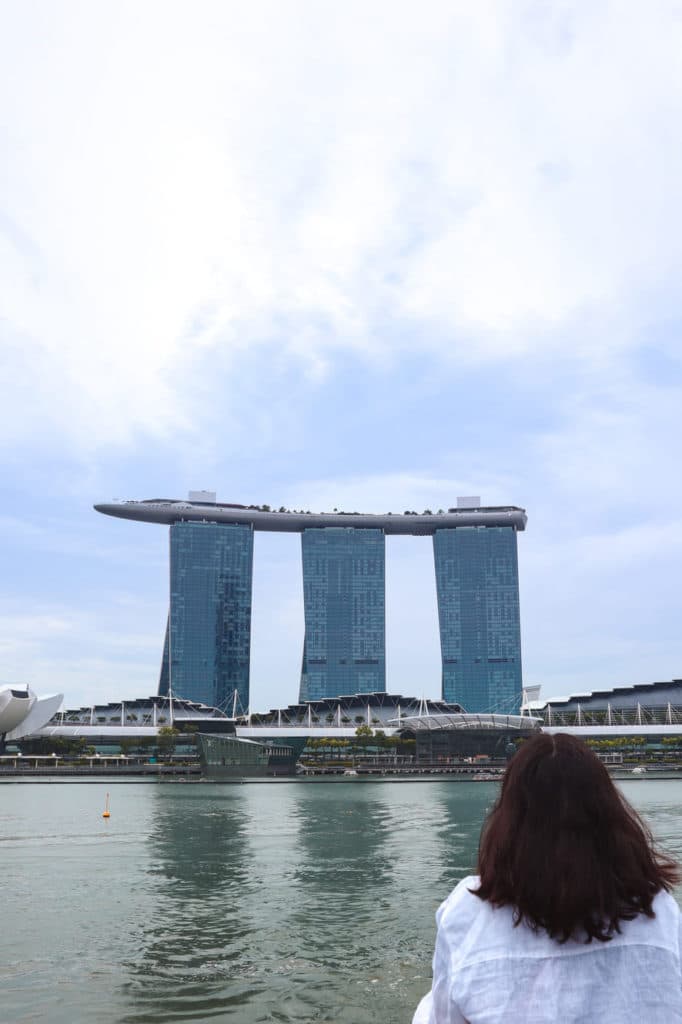
The whole area around the statue is quite pleasant and, most likely, will make you laugh a couple of times when you see people looking for the perfect photo angle with the jet of water that comes out of the lion’s mouth.
» Marina Bay Sands
Marina Bay Sands is the most iconic building in Singapore and also one of the most famous in the world. This is due to its futuristic architecture that makes the building look like a boat.
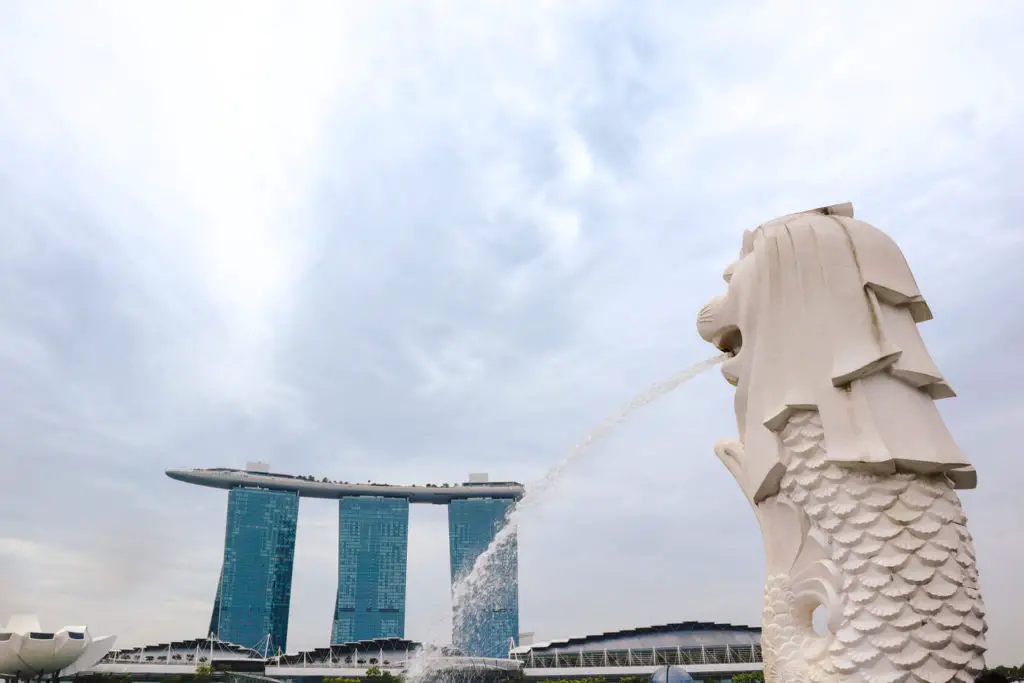
In addition, its infinity pool is one of the most well-known in the country and one of the top places to visit in Singapore. However, unfortunately, this can only be used by guests of the hotel that exists in Marina Bay Sands.

Even so, you can take a vertiginous lift ride up to the building’s Observation Deck and admire what is one of the best views over Singapore.
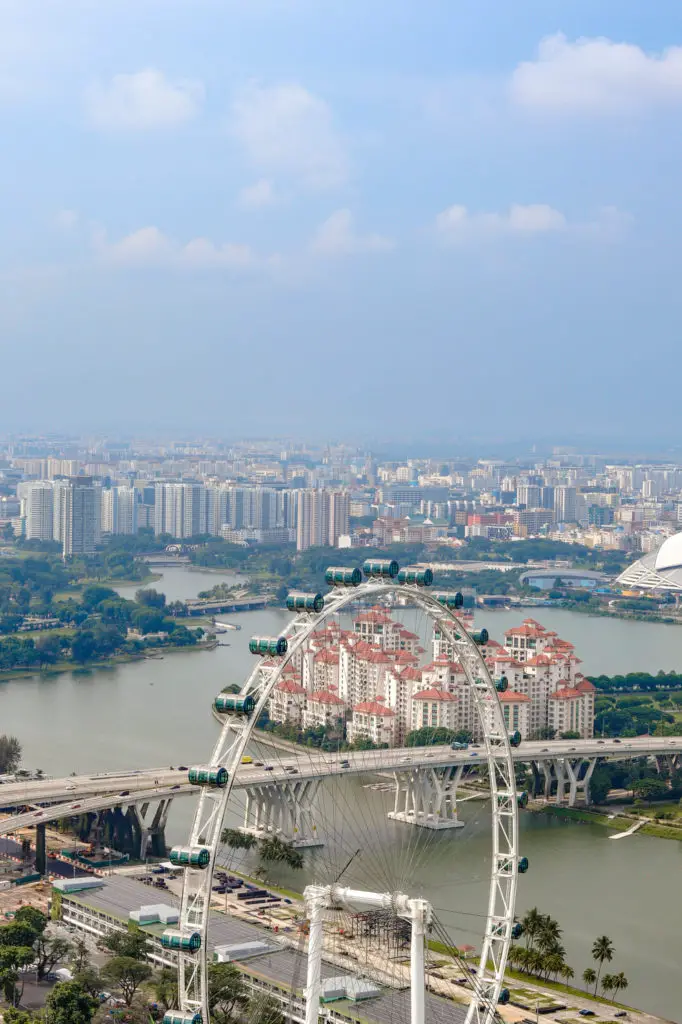
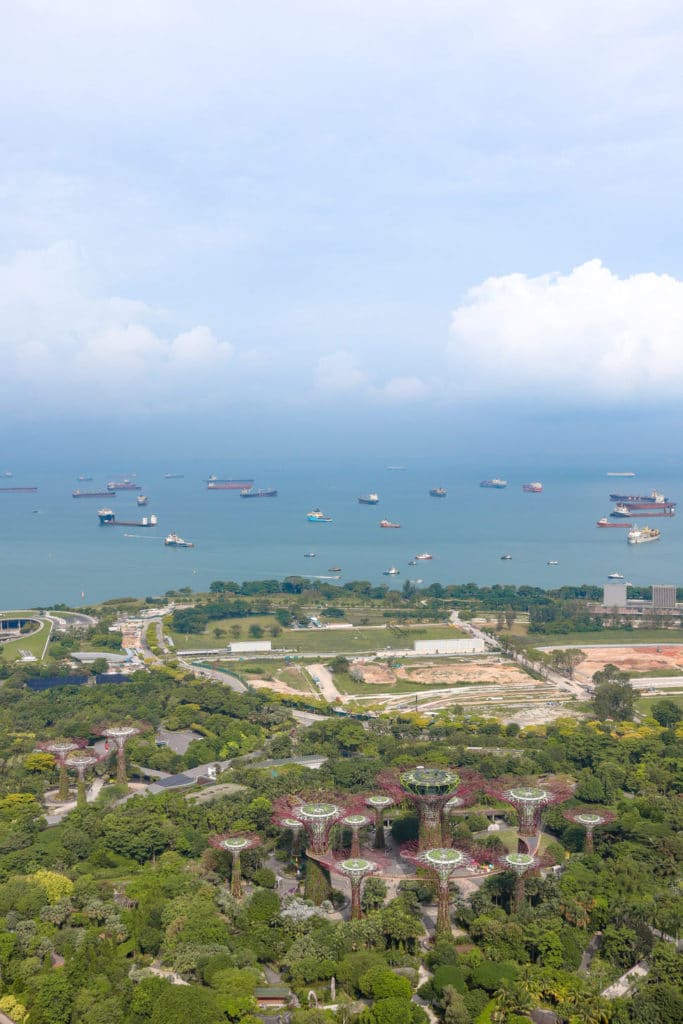
📝 USEFUL INFORMATION: The Observation Deck at Marina Bay Sands is open from 11 am to 9 pm daily. The ticket costs 32 SGD (21.62€) and can be purchased either on the official website or Get Your Guide (slightly cheaper).
Well, I know it can be a bit of an expensive attraction, but I guarantee it’s worth it!
» Sri Krishnan Temple
Built in the late 19th century, the Sri Krishnan temple is one of the oldest Hindu temples in Singapore. Despite its small size, it is well worth the visit.

» Little India
The list of the best things to visit in Singapore also includes Little India – another proof that Singapore is a mix of cultures and religions. Some of the main places to visit in this part of Singapore are:
- Sri Veeramakaliamman Temple
- Indian Heritage Centre
- Tan Teng Niah Old Residence – one of the most Instagrammable buildings in the city
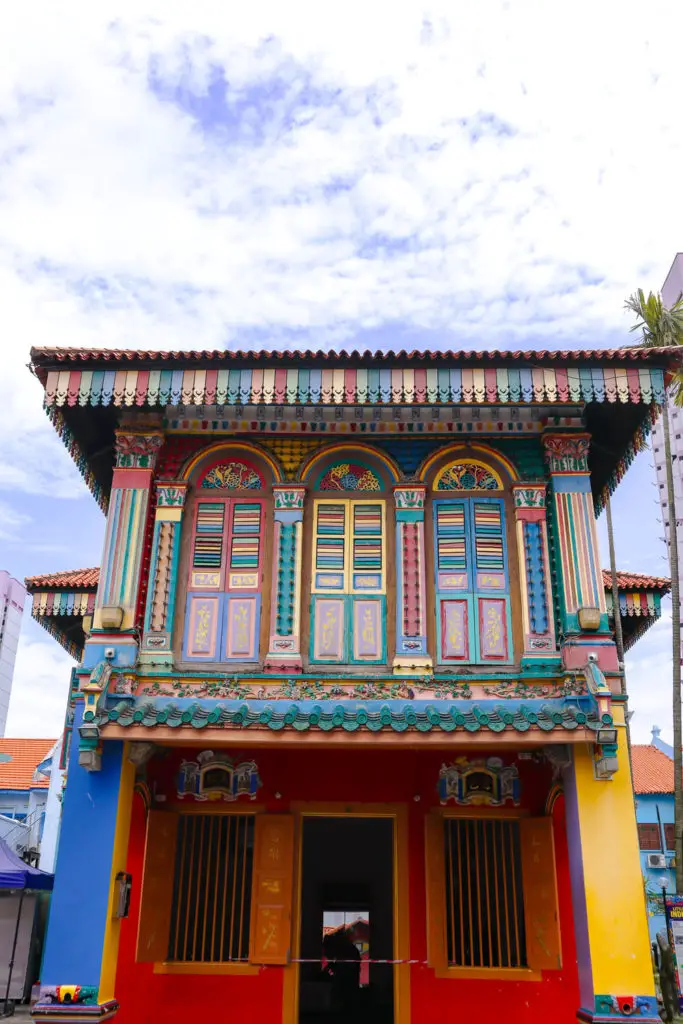
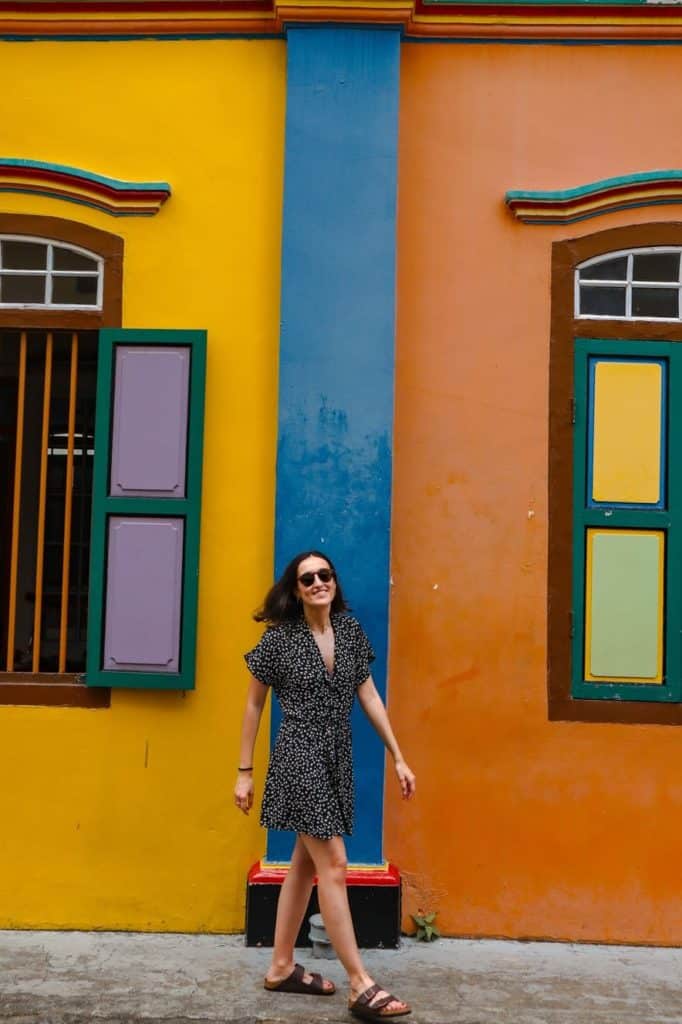
» Arab Quarter
It’s now time to visit the Arab Quarter. Located in the Kampong Glam district, this is one of the liveliest areas of the city. I especially recommend a walk along Arab Street, with several shops and restaurants serving Middle Eastern food and the Sultan mosque in the background.
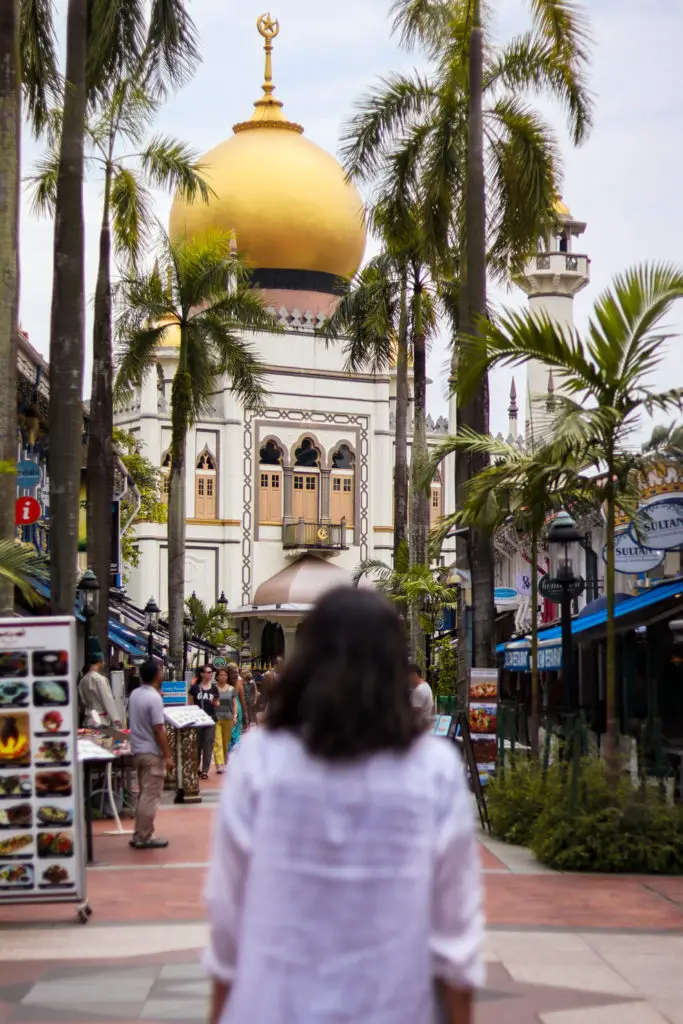

The Sultan mosque can be visited inside for free. And, even if you are not dressed appropriately, they will provide you with some clothes 😉.
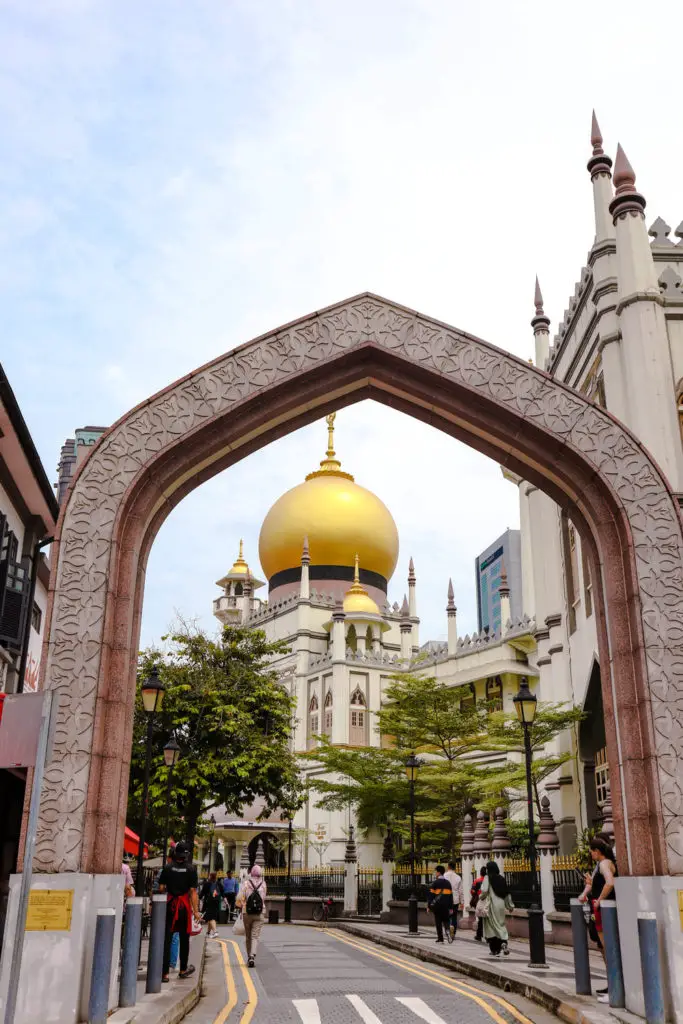
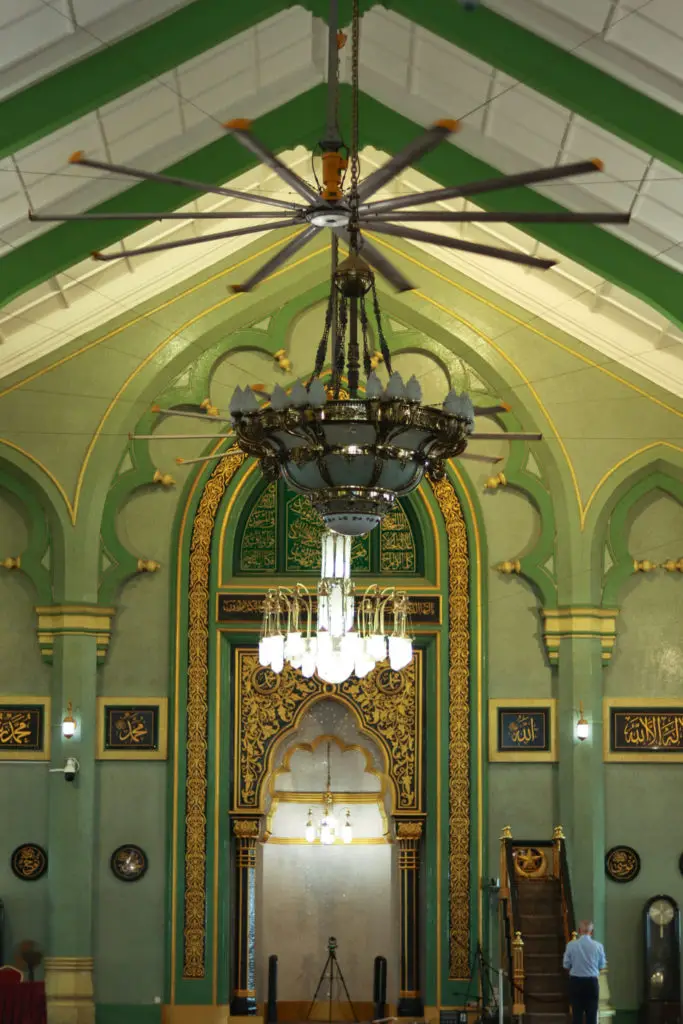
📝 USEFUL INFORMATION: The Sultan Mosque is open Monday to Thursday, Saturdays and Sundays from 10 am to noon and 2 pm to 4 pm. It is closed on Fridays for visits.
And finally, if you search for Haji Lane, you’ll find dozens of street art pieces. It’s hard not to love it.
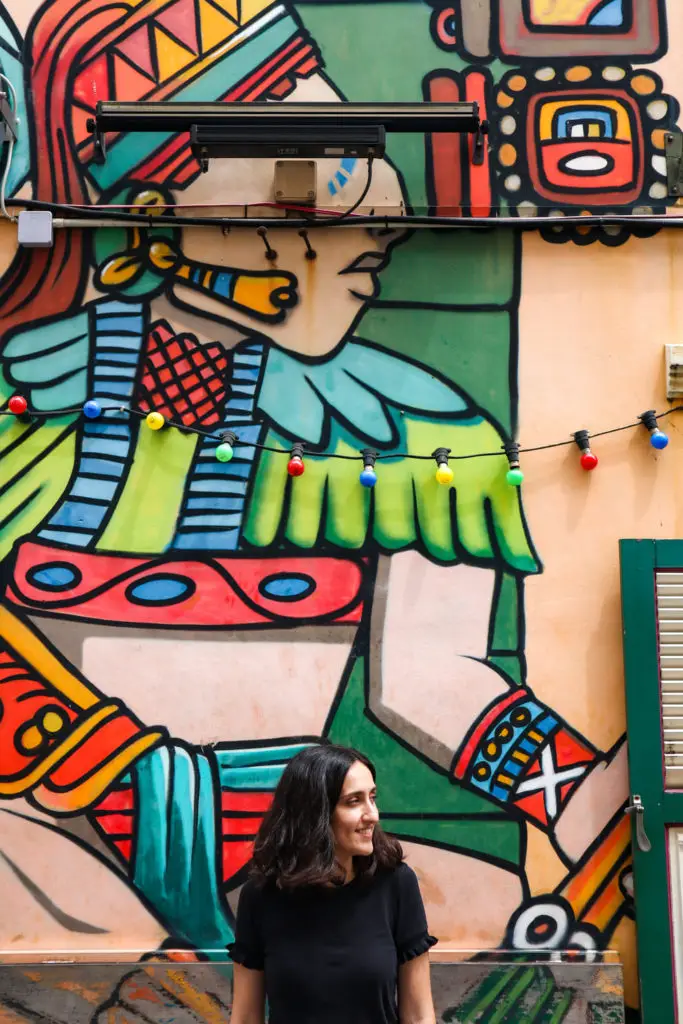
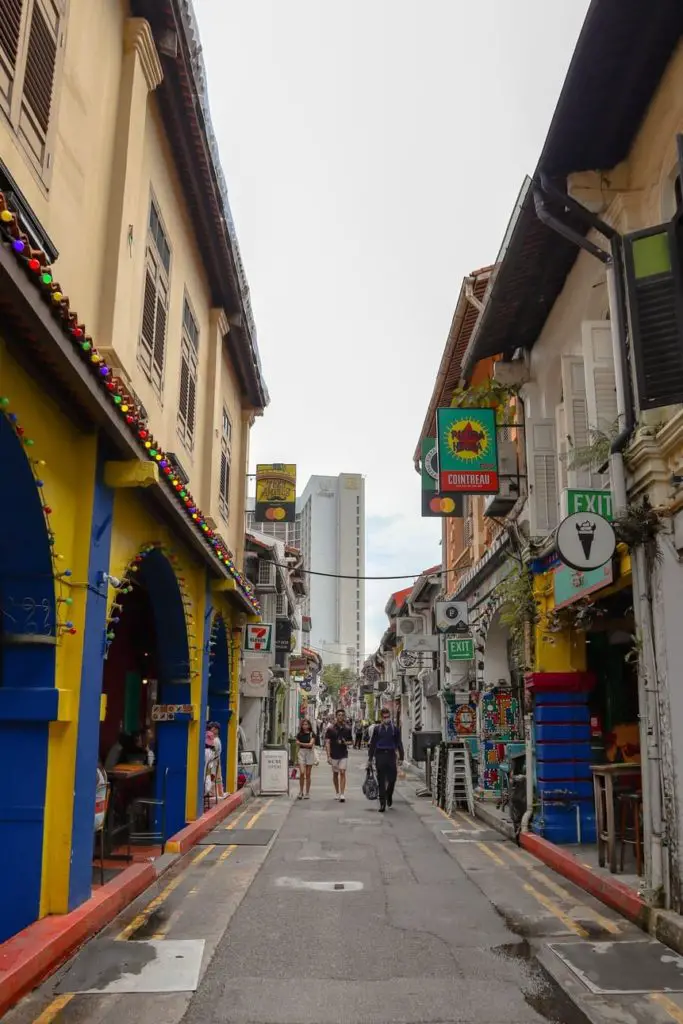
You can also take the opportunity to visit the Malay Heritage Centre, which is located in the city. However, it is closed until 2025.
» Gardens by the Bay
The rest of the day will be spent exploring one of Singapore’s main attractions – Gardens by the Bay. This is definitely one of the must-do things in Singapore and, most likely, it’ll surprise you 🥰.
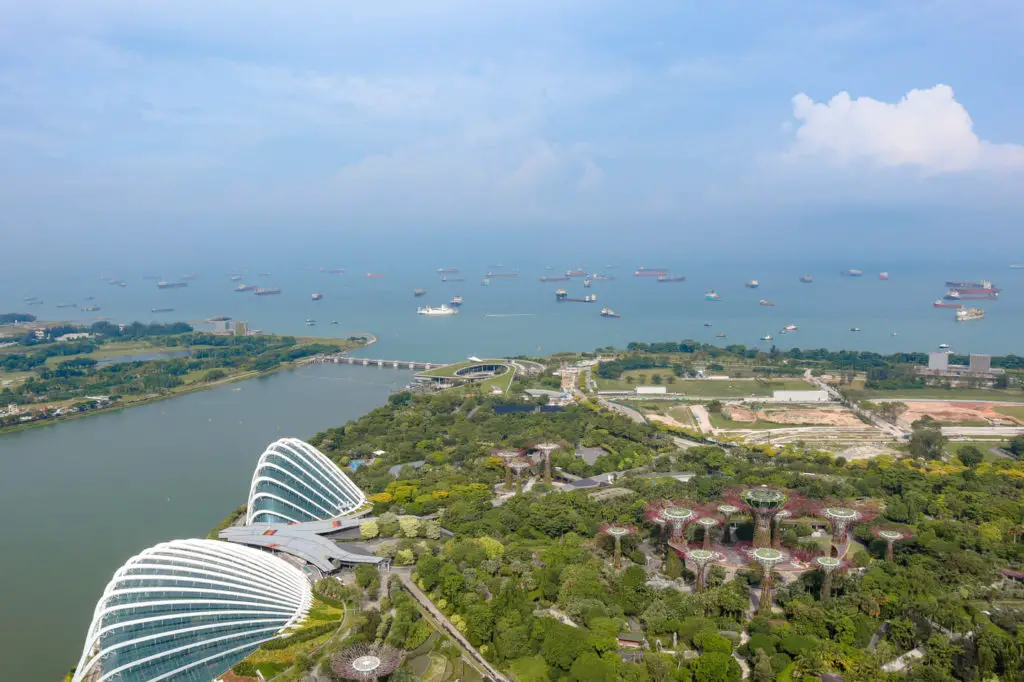
The Gardens by the Bay complex is huge and you can easily spend an entire morning/afternoon there. Although there are many points of interest in these gardens, I will leave here my tips for first-time visitors looking to visit the most popular spots.

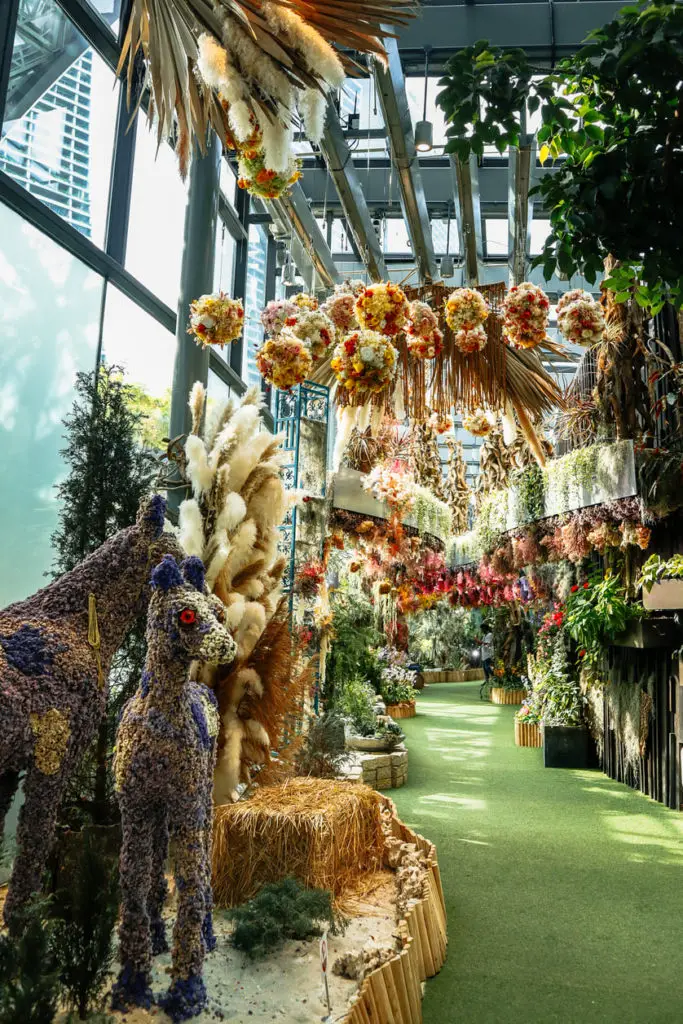
I suggest starting your visit at Floral Fantasy – a small space with hanging flowers and creative floral arrangements. This is not one of the most visited spots at Gardens by the Bay, but I must say I loved it!
📝 USEFUL INFORMATION: Floral Fantasy is open Monday to Friday from 10 am to 7 pm and until 8 pm on other days. Admission costs 20 SGD (~13.51€) and tickets can be purchased on the official website.
I suggest you continue towards the Dragonfly Bridge. Access is free and here you have a great perspective of Marina Bay Sands and the surrounding gardens.
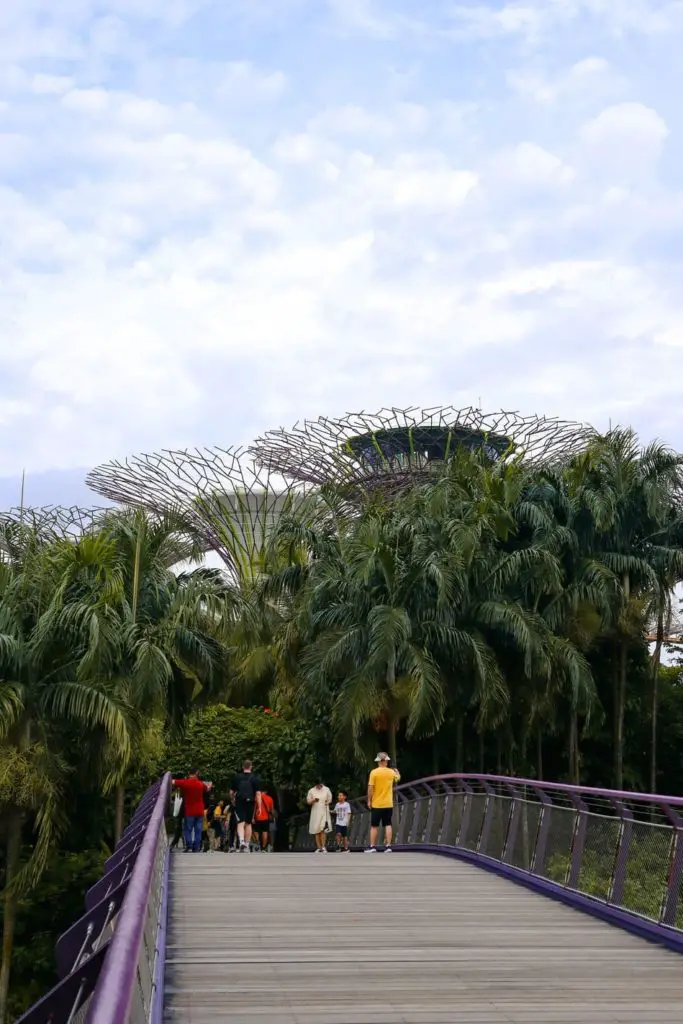

Nearby you will also find Dragonfly Lake, a nice place to take a walk.
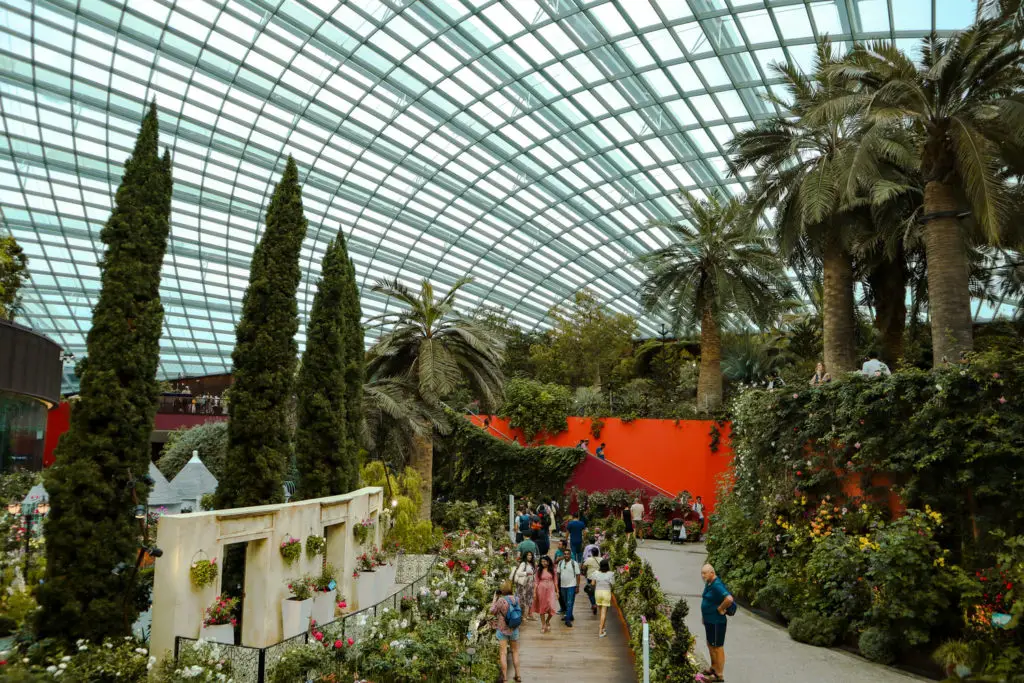
Next is the Flower Dome – a pavilion where we find plants that make us travel to other places in the world. In my opinion, this is the least interesting place in Gardens by the Bay, but it is sold in a package with Cloud Forest, so you can visit it anyway.
📝 USEFUL INFORMATION: The joint ticket for Flower Dome and Cloud Forest costs 53 SGD (~ 35.8€). The opening hours are from 9 am to 9 pm. More information here.
From Flower Dome, I suggest you head straight to the Cloud Forest. This is one of the most popular places in Gardens by the Bay and has an incredible mystique. Here you will also find one of the largest indoor waterfalls and plants from all over the world. During your visit, you’ll probably feel like you’re lost on some other planet!
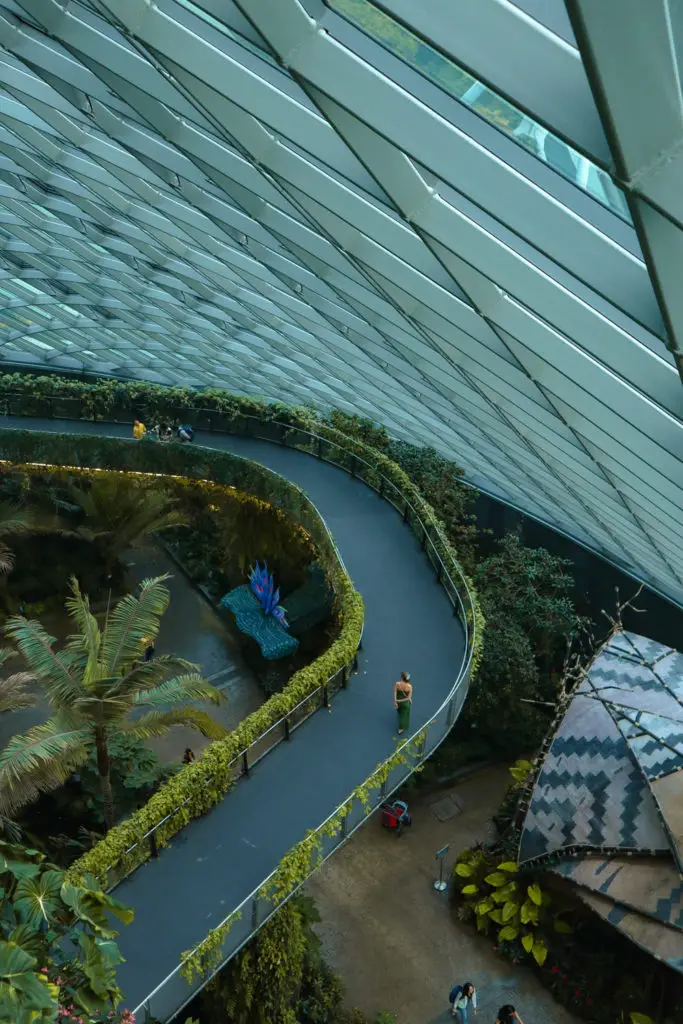

To make your visit even more special, I suggest you choose to visit the Cloud Forest at a time when there is mist inside the building. This happens at 10 am, 12 pm, 2 pm, 4 pm, 6 pm and 8 pm.
📝 USEFUL INFORMATION: The Cloud Forest is open from 9 am to 9 pm. Sometimes there are themed exhibitions inside. More information here.

But Gardens by the Bay have even more to offer. It’s time to have a closer look at the Supertree Grove (the famous trees that are the brand image of the gardens) 😍. Beyond the aesthetic effect, these trees are vertical gardens with over 200 plant species and some even aim to produce solar energy.
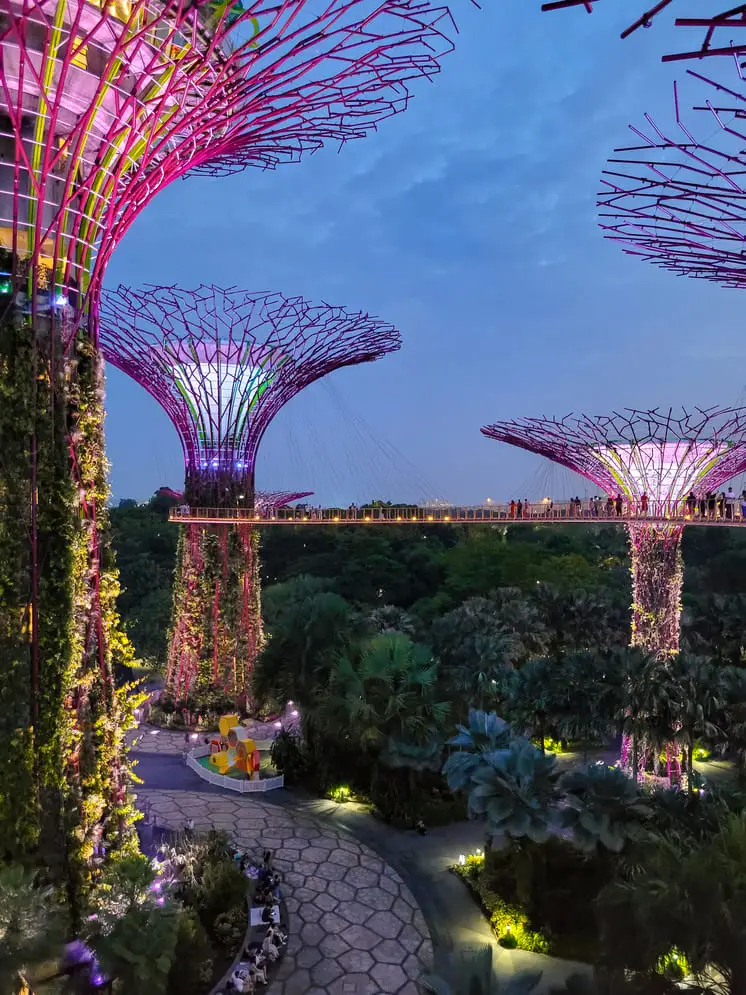
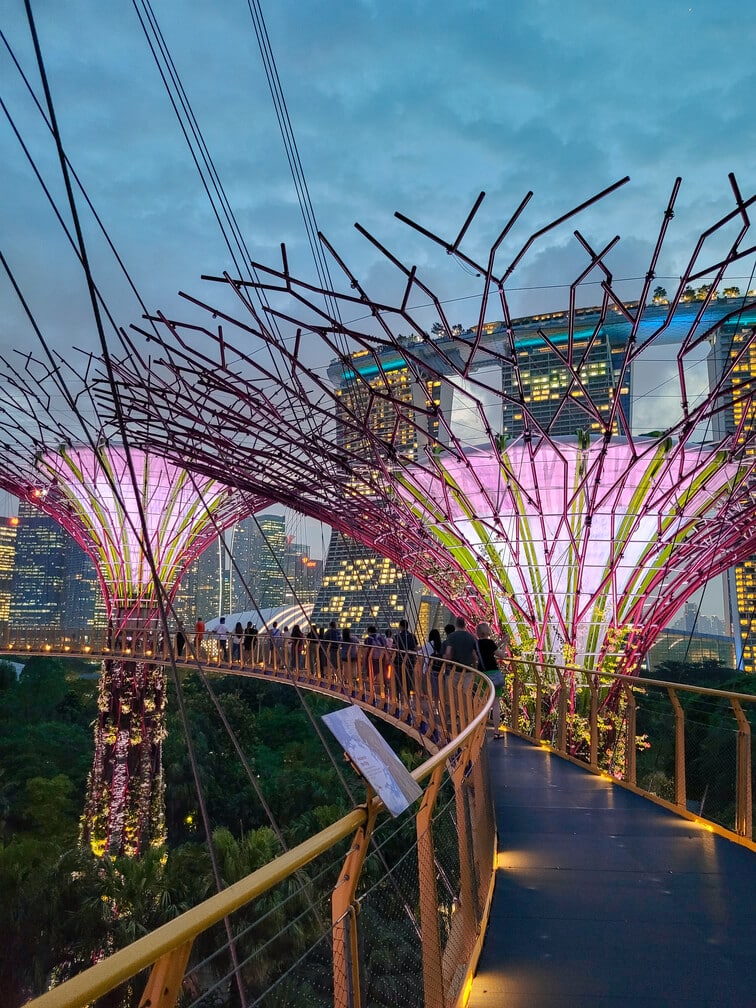
If you want a different perspective on these futuristic trees, I highly suggest stopping by the OCBC Skyway. Located 22 metres high, this bridge connects two of the trees in Supertree Grove.
📝 USEFUL INFORMATION: The OCBC Skyway is open from 9 am to 9 pm and costs 12 SGD (8.11€). Tickets can be purchased in advance online.
Nearby, you can also climb to the top of the tallest tree – Supertree Observatory. From the top terrace, you will have unobstructed views of the city and the unbelievable Marina Bay Sands.
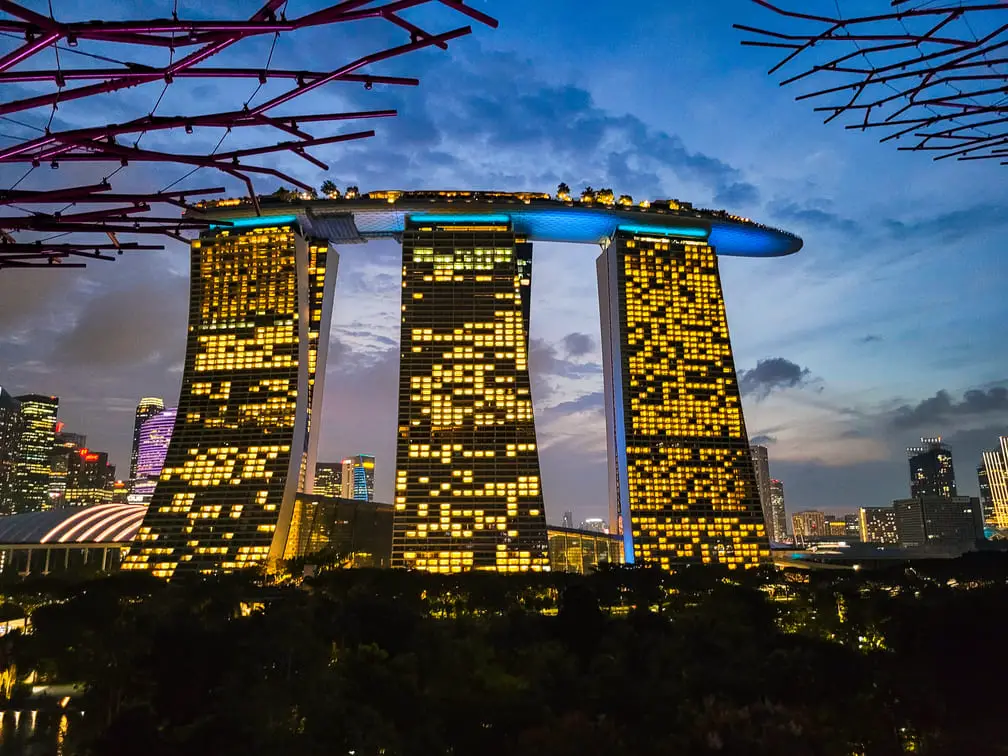
📝 USEFUL INFORMATION: The Supertree Observatory is open from 9 am to 9 pm and costs 10 SGD (~6.75€). Tickets can be purchased from the official website.
And if you’ve chosen to visit Gardens by the Bay in the afternoon, it’s probably time for the sun to set and one of Singapore’s most magical moments to begin. I’m talking about Garden Rhapsody – a light and sound show unlike any other. The show isn’t always the same, but it’s totally free. This is one of the top tourist attractions in Singapore, so be sure not to miss it.


It happens every day at 7:45 pm and 8:45 pm and I have to say, it will probably be one of the most unforgettable moments of your trip to Singapore. People usually sit (or even lie down! Trust me, it’s BEAUTIFUL 🤩) on the floor watching the show.
💡 EXTRA TIP: There are days when Gardens by the Bay attractions close for maintenance. Although they don’t all close at the same time, I recommend you check on the official website which days are closed for maintenance to avoid disappointment.

Finally, and especially for those travelling on a budget, I know that the combined price of all these attractions at Gardens by the Bay is quite high. So if you can only visit one or two of the paid attractions, I particularly suggest the OCBC Skyway and Cloud Forest.
Singapore Itinerary: 4 days – Day 3
» Botanic Gardens
The third day in Singapore will be spent getting to know some of the city’s green spaces. And I suggest you start with the Botanic Gardens.
The Singapore Botanic Gardens are the first UNESCO World Heritage Site in Singapore. There are actually different gardens in the complex, the most well-known being the National Orchid Garden.
📝 USEFUL INFORMATION: Much of the Botanic Gardens complex has free admission. One of the exceptions is the National Orchid Garden, which costs 15 SGD (~10.1€). You can check the more detailed information here.
» Southern Ridges
Southern Ridges is one of Singapore’s most complete nature walks. Basically, it is a 10 km trail that runs along several parks: Mount Faber Park, Telok Blangah Hill Park, Hort Park, Labrador Park and Kent Ridge Park.
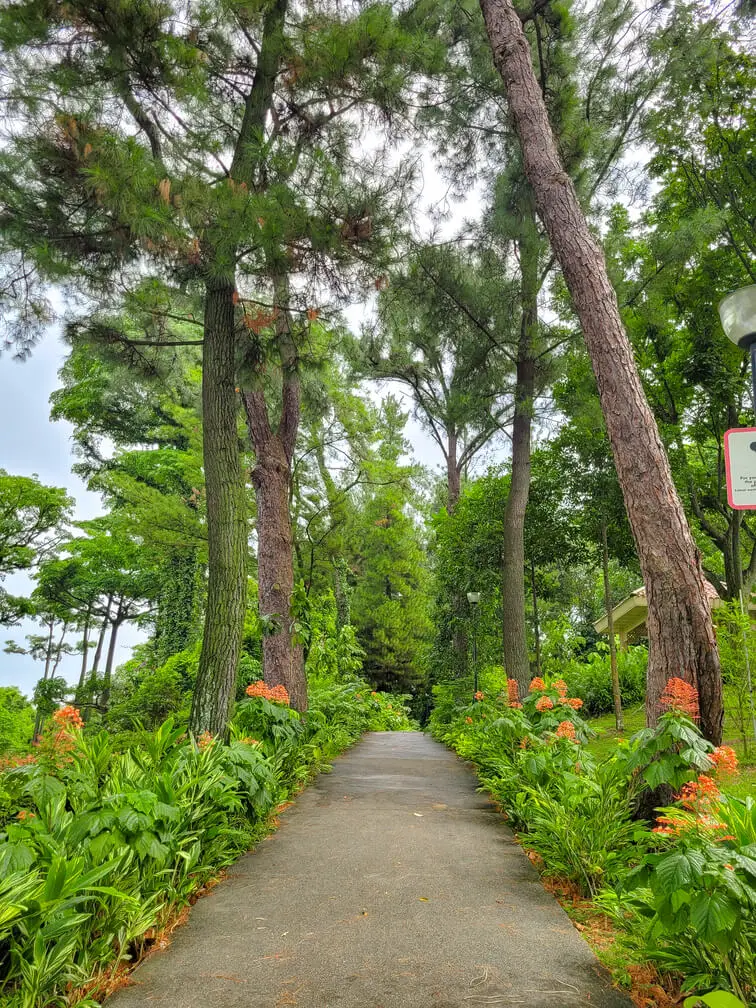
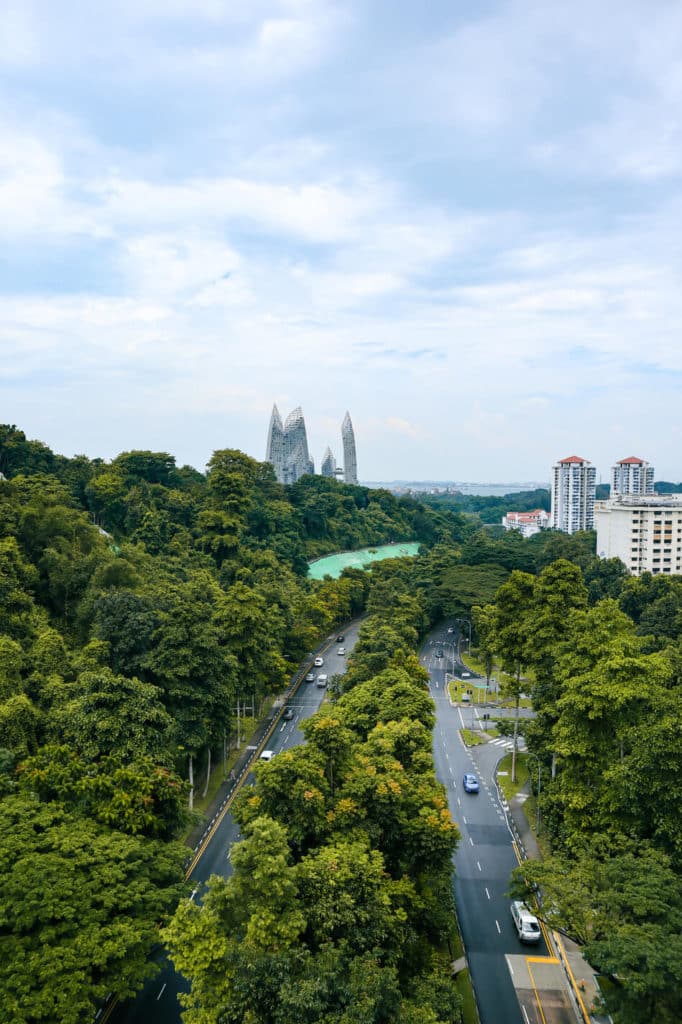
Although the trail is 10 km long (it can take about 3 to 5 hours to complete), it is possible to cover only part of it. In fact, after doing some research, my idea was to walk only 4,3 km of the trail. Ideally, this is the route I recommend:
- Mount Faber Park: Faber Peak + Faber Point + Henderson Waves
- Telok Blangah Hill Park: Sembcorp Forest of Giants + Forest Walk + Alexandra Arch
- Kent Ridge Park: Canopy Walk

However, when I visited in June 2023, many of the points I wanted to visit were closed for maintenance, so I was only able to visit the parts located on Mount Faber Peak. Still, I highly recommend it as the views over the city are unique and it is unlike anything else we can visit in Singapore.
💡 EXTRA TIP: To better plan your visit, I suggest you check the official information about the park here.
» Light show at Event Plaza
And after sunset, I suggest you return to Marina Bay Sands to watch the second best light show in Singapore. I’m talking about the Spectra light show, lasting 15 minutes.
📝 USEFUL INFORMATION: The show is free and can be watched from Event Plaza. It takes place every day at 8 pm and 9 pm, and on Saturday also at 10 pm. All the most up-to-date information here.
Singapore Itinerary: 4 days – Day 4
Despite not having spent 4 days in Singapore (much to my regret 😥), I highly recommend anyone who can, stay longer, as there are so many more unique things to do in Singapore.
So, the suggestions I’m going to give for this fourth day are not of places I’ve actually visited, but that I wish I had visited. Maybe on my next trip to Singapore, I can visit these places, who knows 😉.
So, if I had stayed an extra day in Singapore, I would have opted for a combination of these things:
- Sentosa Island
- Pulau Ubin
- Arts and Science Museum
💡 EXTRA TIP: Since most of these places are further away from the centre of Singapore, I suggest only visiting one of them. The Arts and Science Museum is the only exception, and that can be combined with something else.
» Sentosa Island
Sentosa Island is also a great option for those looking to do something different in Singapore. Apart from being one of the most popular places to go to the beach in Singapore, you can visit Universal Studios, the S.E.A. Aquarium, Madame Tussauds Museum, Fort Siloso and much more.
There are several ways to get to Sentosa, but one of the most popular is the Singapore cable car, which connects this island to Mount Faber at the Southern Ridges. So, if you want to see just a bit of Sentosa, you can combine a visit there with the Southern Ridges.
💡 EXTRA TIP: For more practical information on organizing a visit to Sentosa Island, I suggest checking out this website.
» Pulau Ubin
Pulau Ubin is the perfect place to escape the city life of central Singapore. It is the place of choice for those who enjoy being in touch with nature. On the island, one can visit old quarries as well as traditional villages that existed in Singapore before the country became what it is today.
Two of the most popular places on the island are Pekan Quarry and Chek Jawa Wetlands (where we find a walkway and a viewpoint). Many of the visitors choose to visit the island by bicycle, as the circulation of other types of vehicles is limited.
» Arts and Science Museum
The Arts and Science Museum leaves no one indifferent in Singapore, both for the exhibitions we can visit inside and for the architecture of the building in which it is located. Definitely one of the cool things to do in Singapore!
The museum’s exhibitions aim to combine art, science, culture and technology. They are mostly interactive and often temporary.
📝 USEFUL INFORMATION: The museum is open from 10 am to 7 pm every day. You can buy tickets for the museum here.
Must-try foods in Singapore
Singaporean cuisine is very diverse and has influences from many neighbouring countries such as Malaysia, China, India, Indonesia and even Western influences. However, if you are curious to try some of Singapore’s typical food, I suggest the following dishes:
- Hokkien Prawn Mee: noodles with seafood
- Kaya Toast: traditional breakfast with toast spread with kaya (a kind of coconut jam). It is usually served with soft-boiled eggs.
- Roti Prata: of Indian origin, is a kind of bread served with lentil curry
- Hainanese chicken rice: chicken stew with rice cooked in the chicken water
- Satay: skewers, usually of beef or chicken
- Char Kway Teow: stir-fried rice noodles
- Singapore Sling: a cocktail that originated at Raffles Hotel and is delicious. It’s quite fruity!
Restaurants in Singapore
Although there are several restaurants in Singapore, one of the best options for dining in Singapore is the hawker centres, which turn out to be much cheaper. So, I leave you with some recommendations:
- Liao Fan Hawker Chan (€): has already had a Michelin recognition and is perfect to try the Hainanese chicken rice
- Lau Pa Sat (€): hawker centre with lots of options inside, but I ended up trying the satay stalls on the street
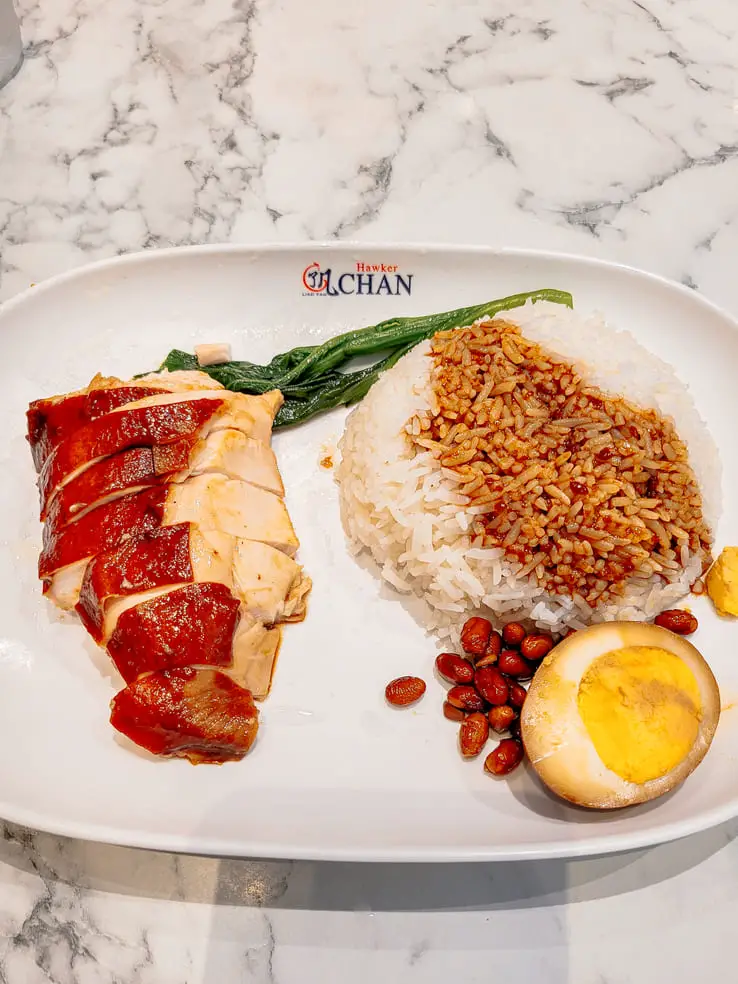
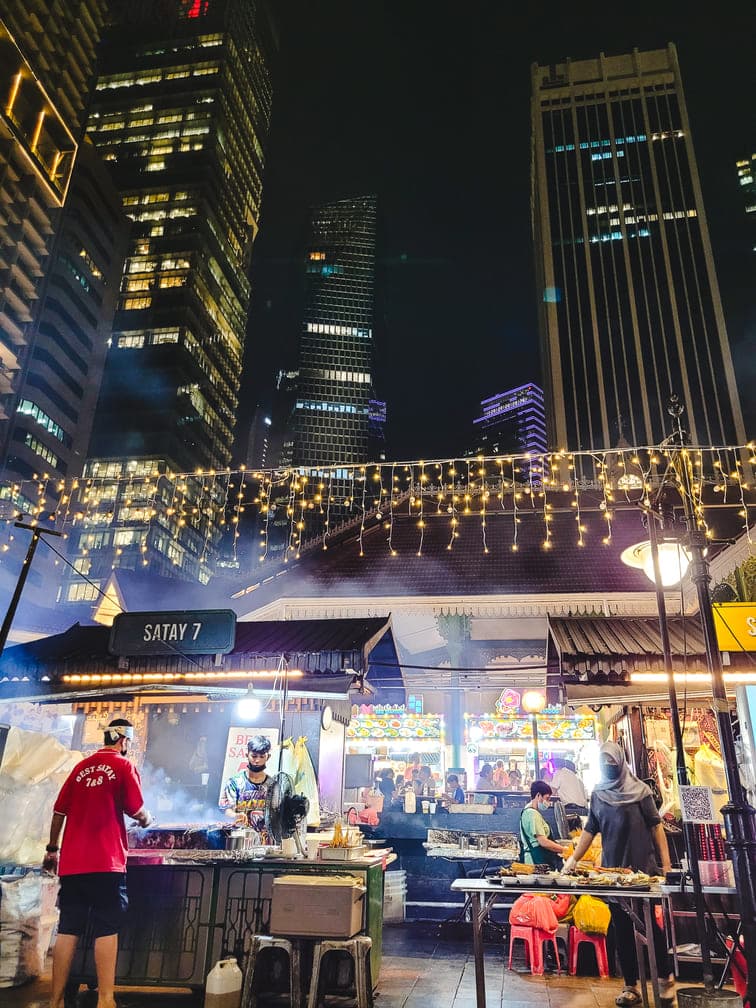
- Maxwell Food Centre: I have not tried it personally, but I have heard good things about it
- Café Monochrome (€€): for a funny experience, in a fully 2D café

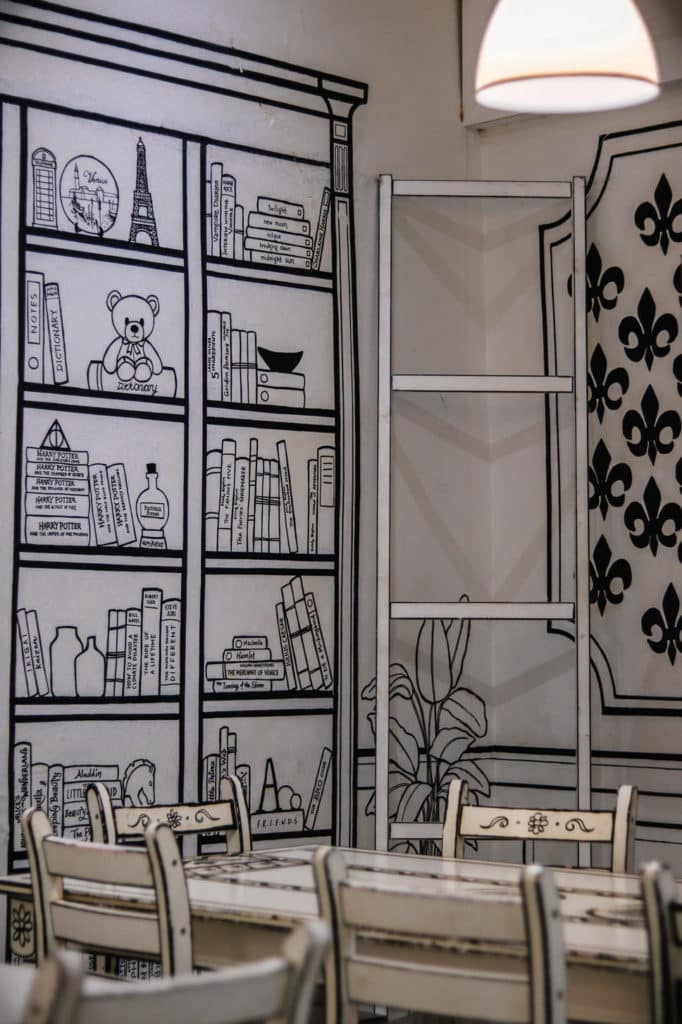
Disclaimer: this post may contain some affiliate links, which means I get a small commission if you buy something through my links. This doesn’t represent any additional cost to you and you’ll be supporting my work here on the blog😊

